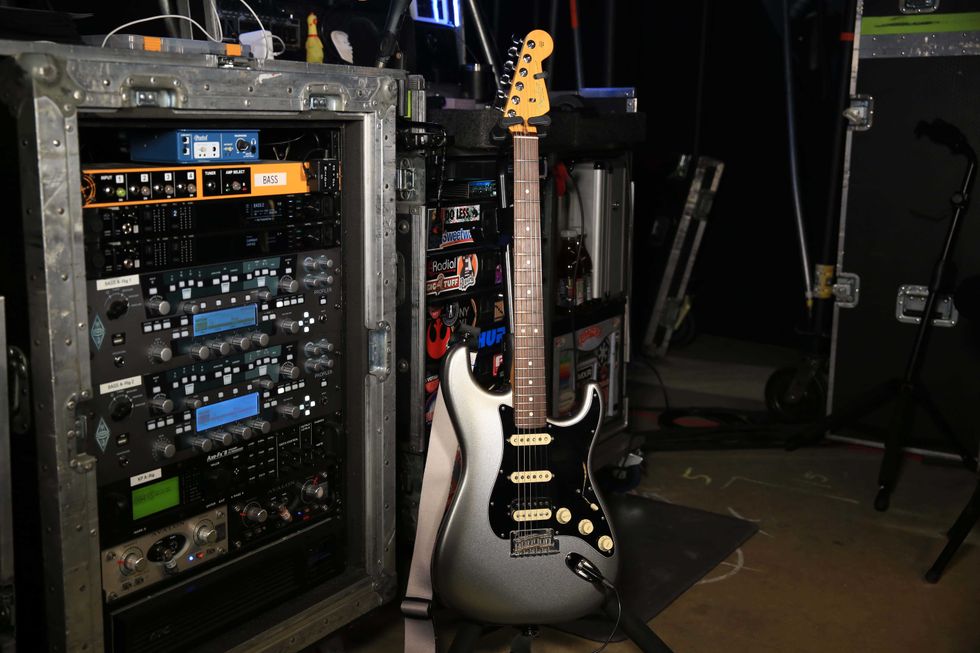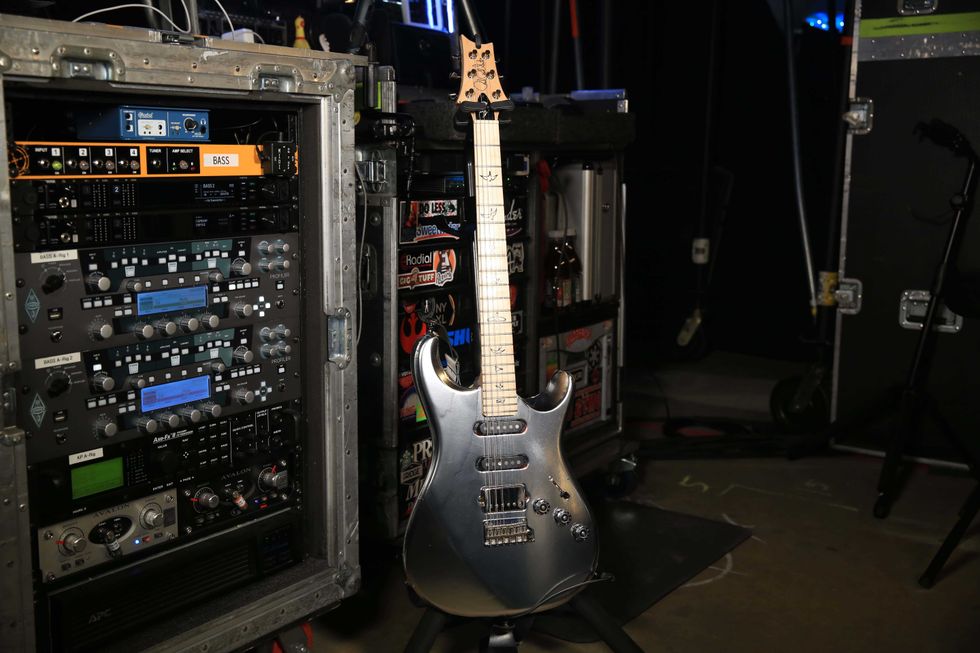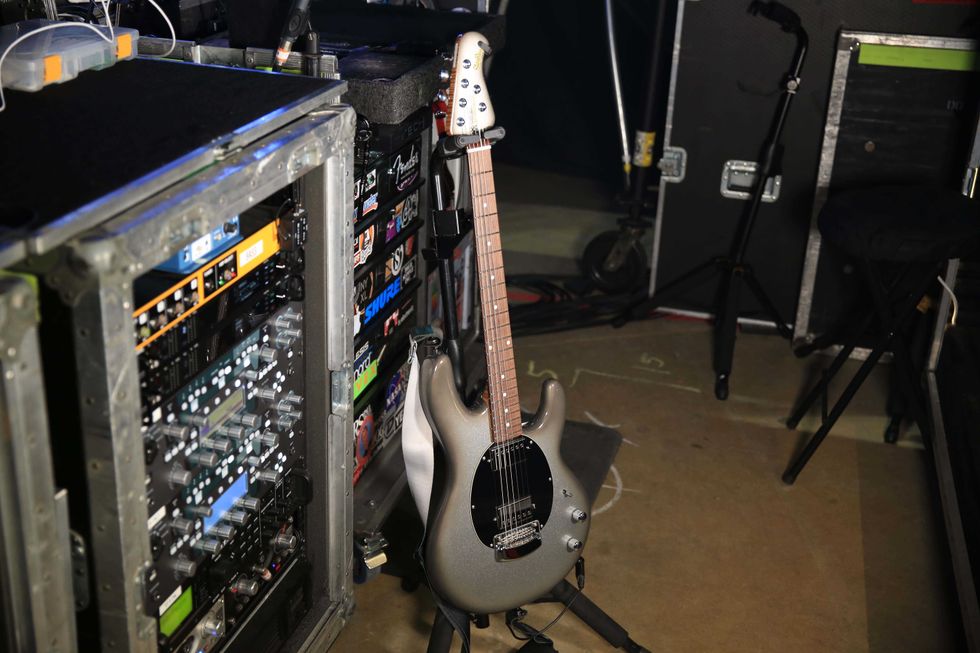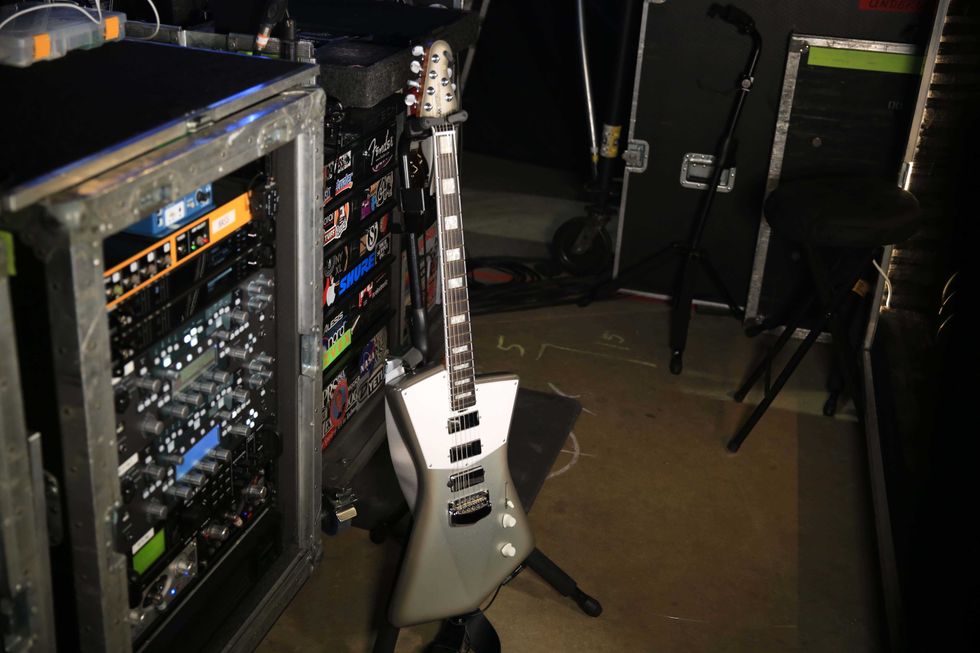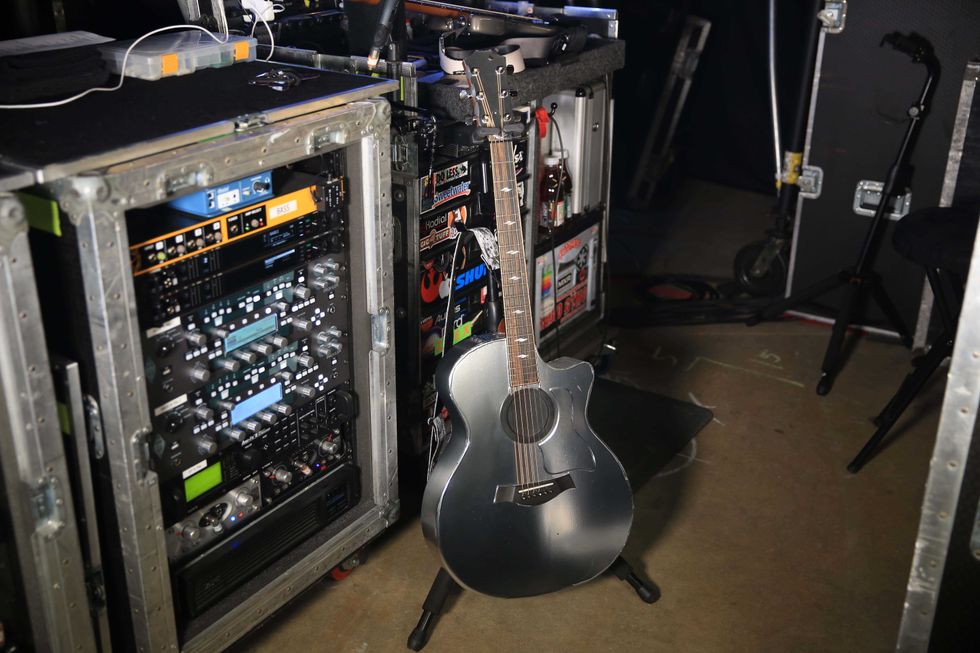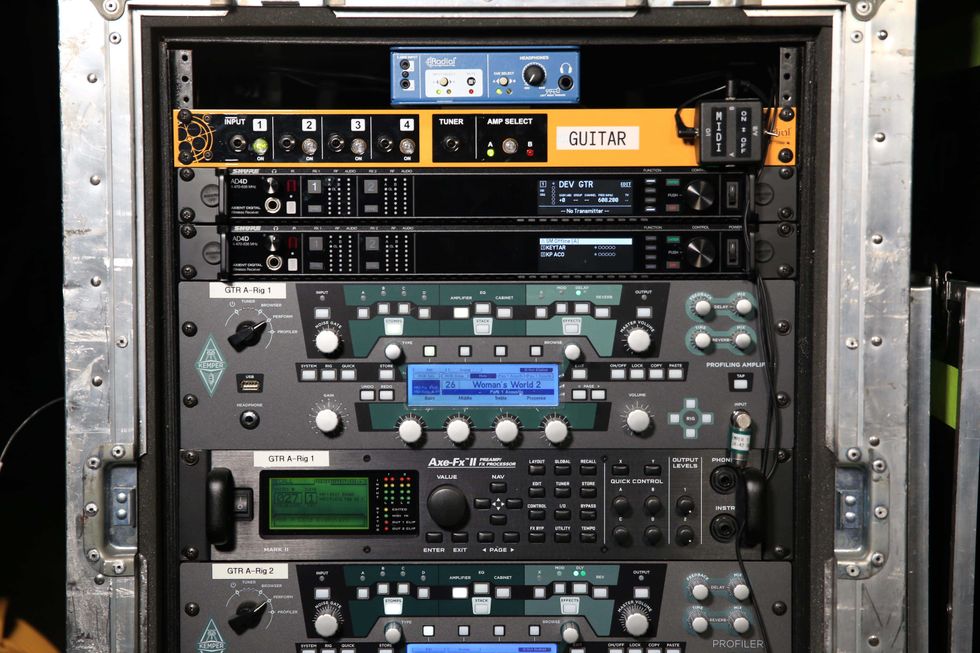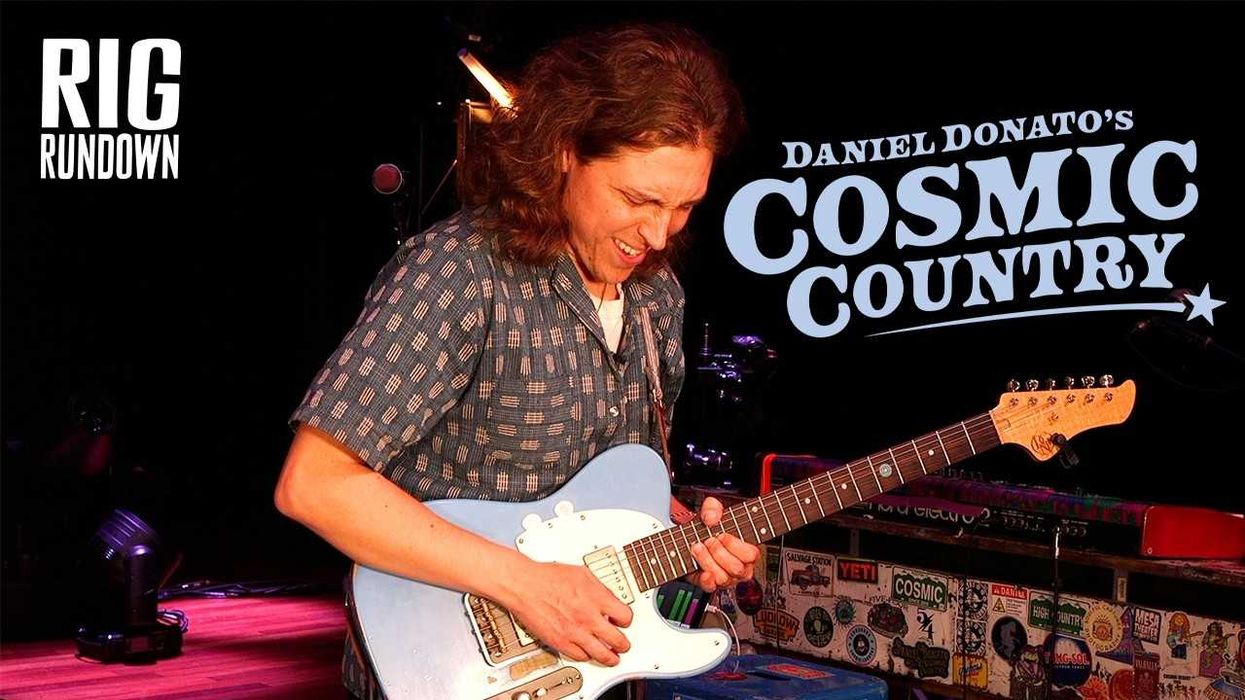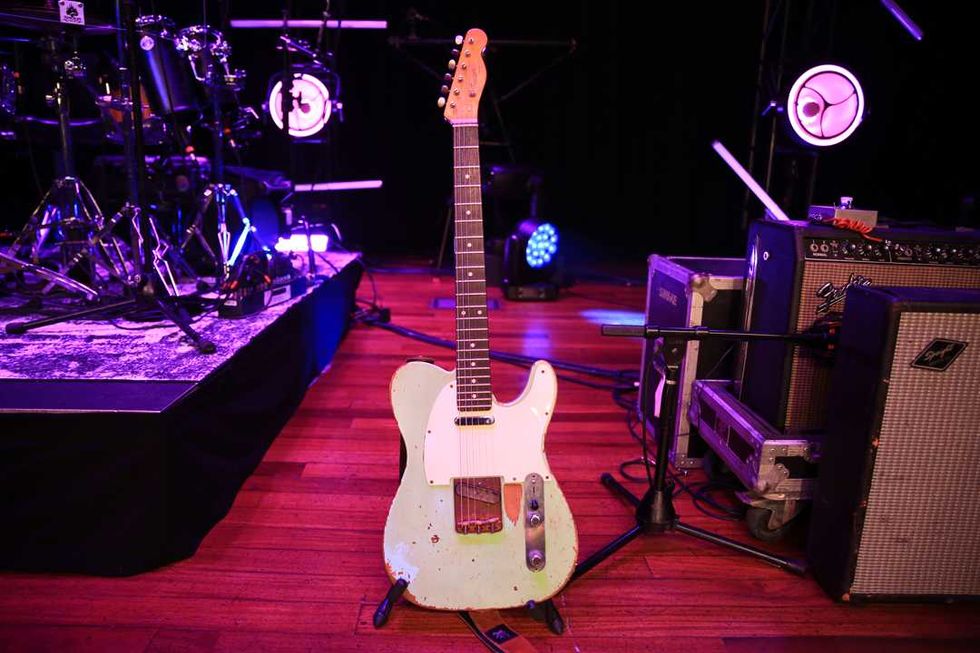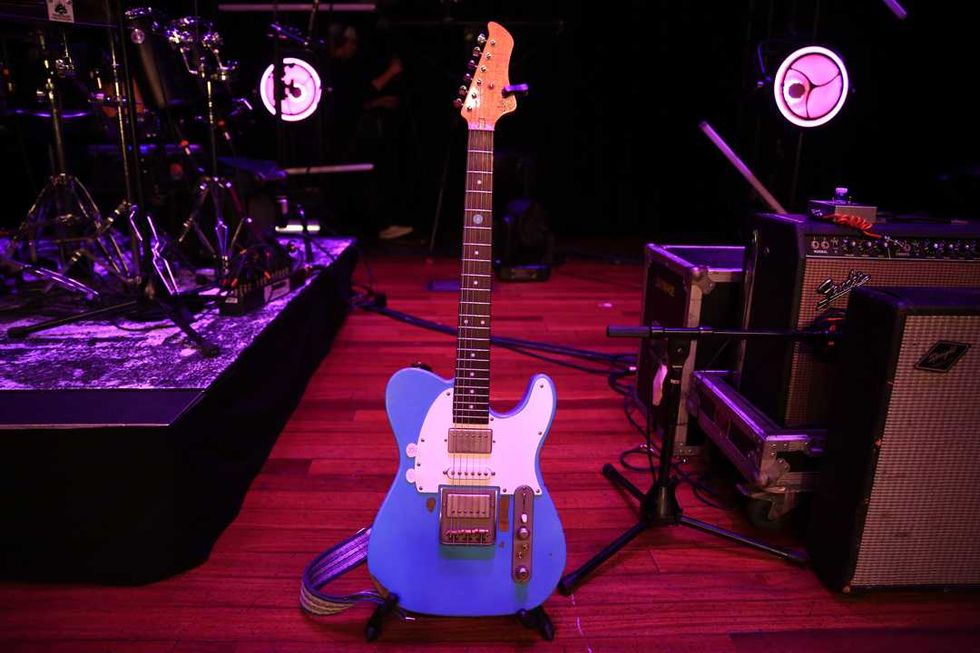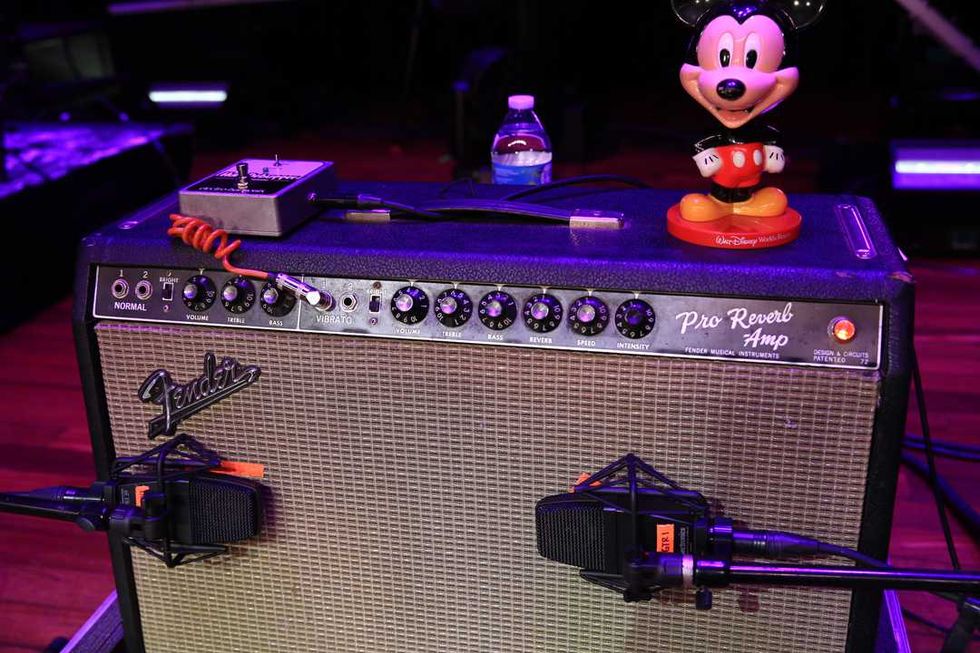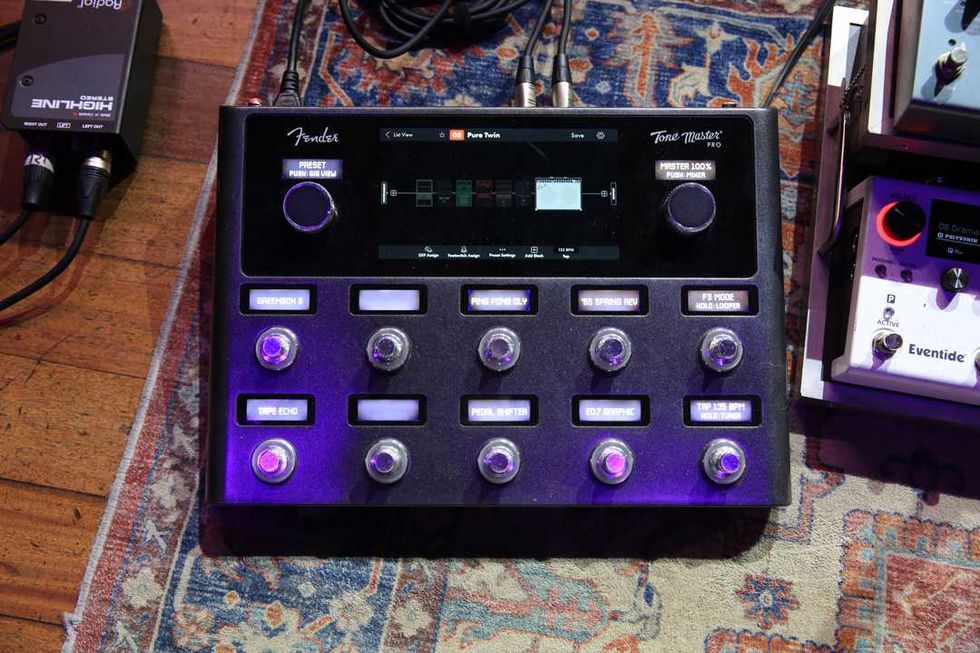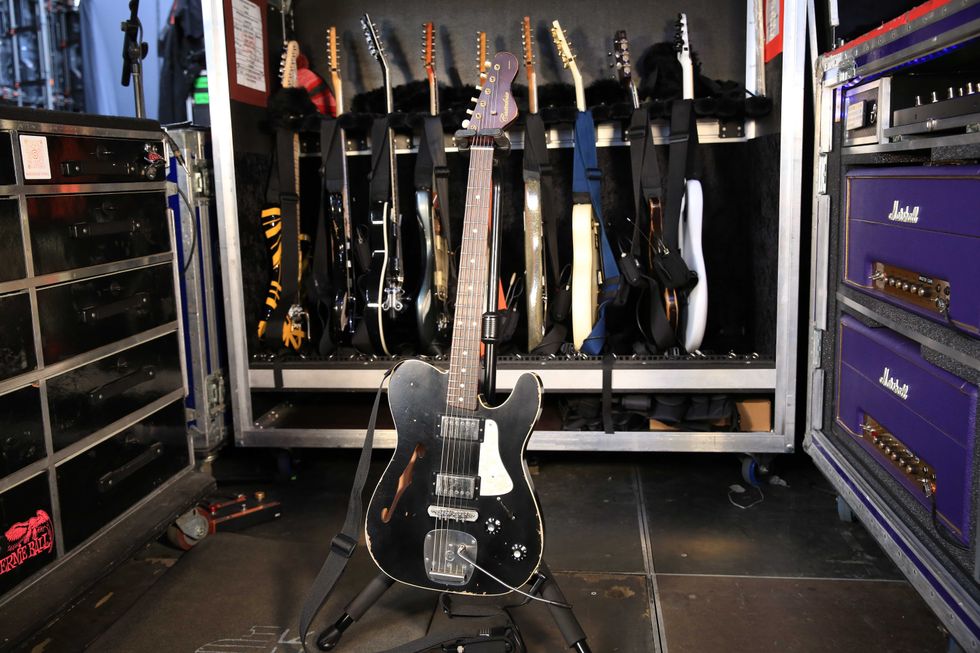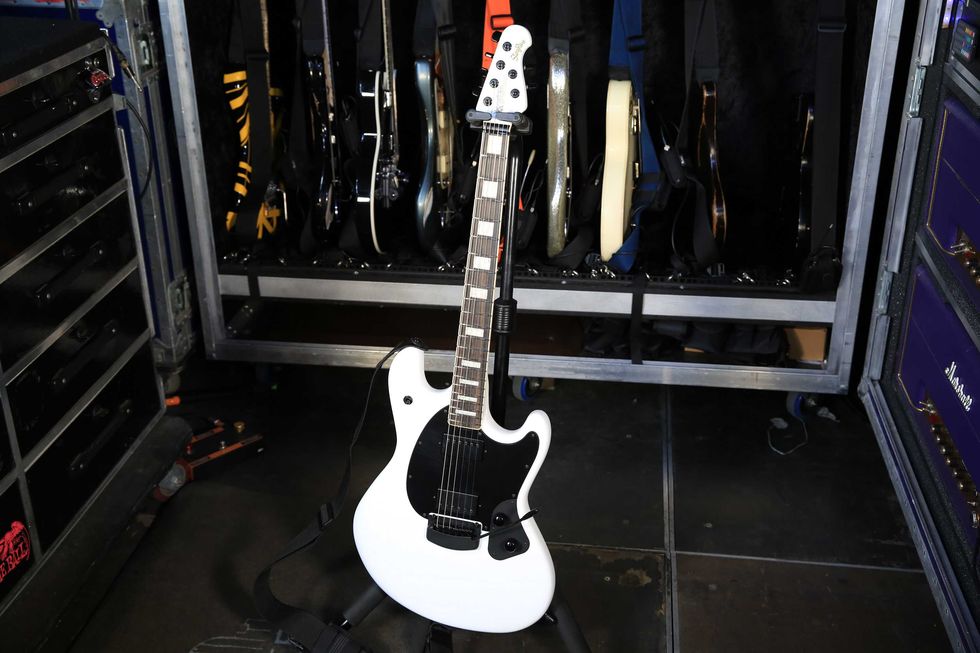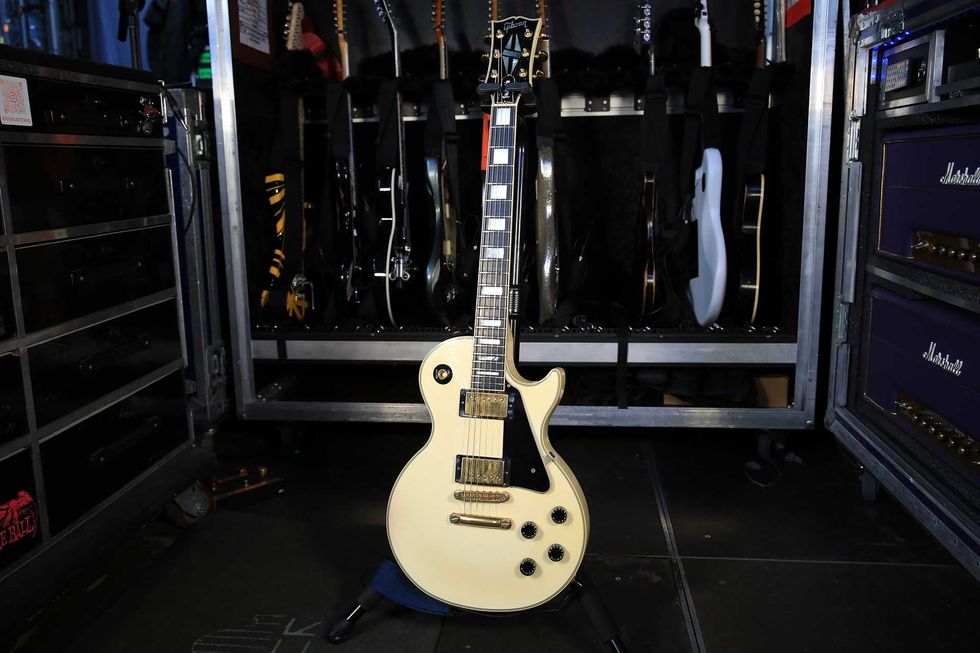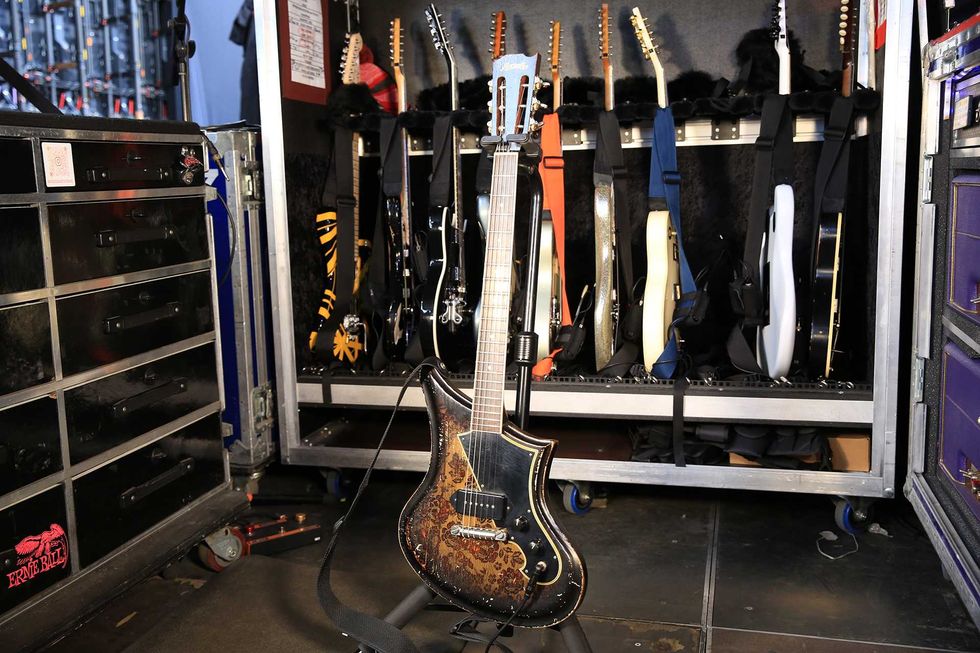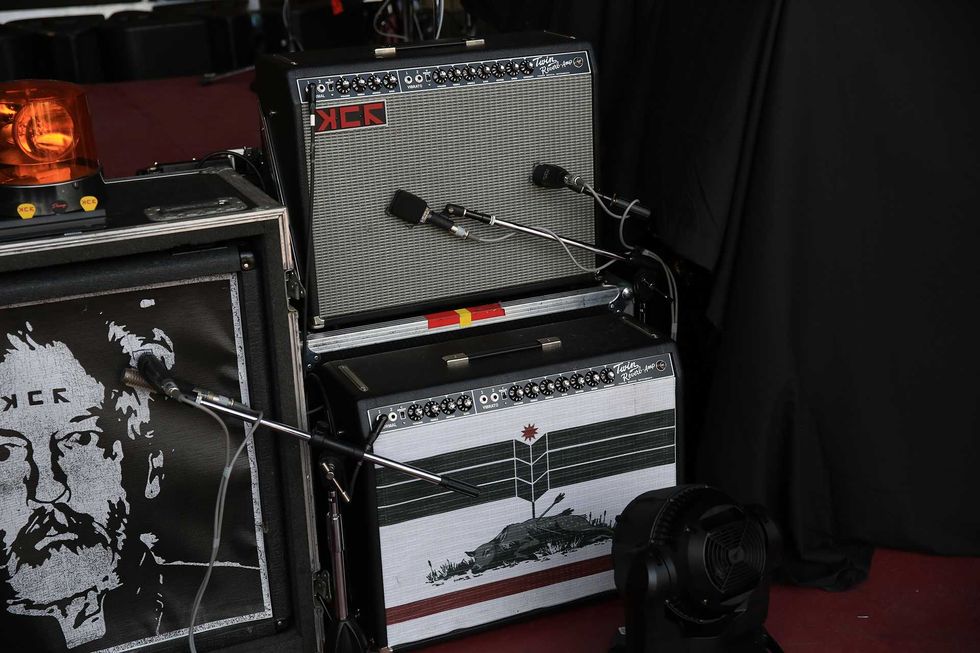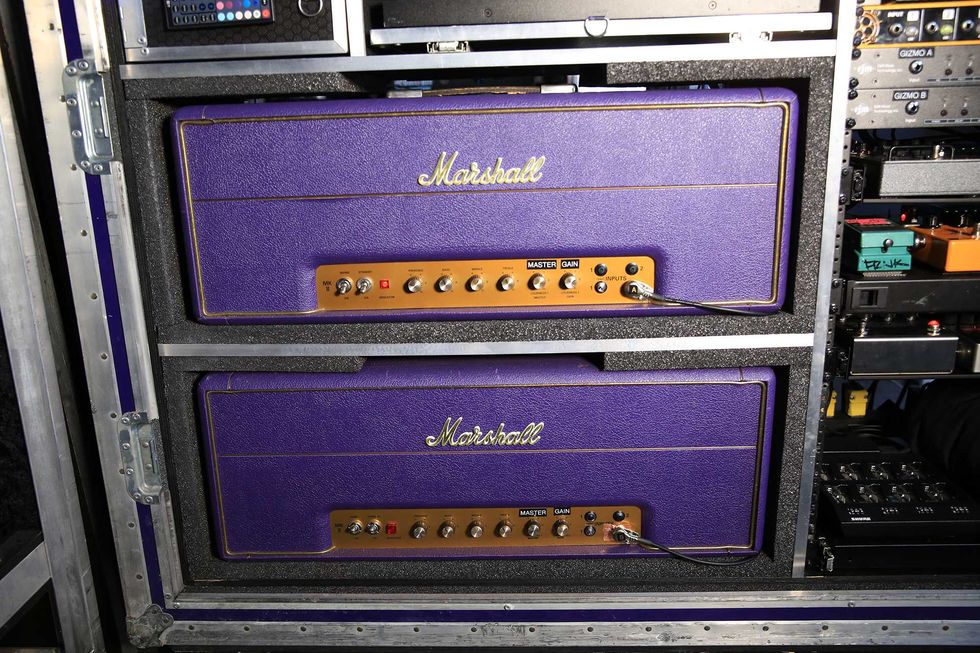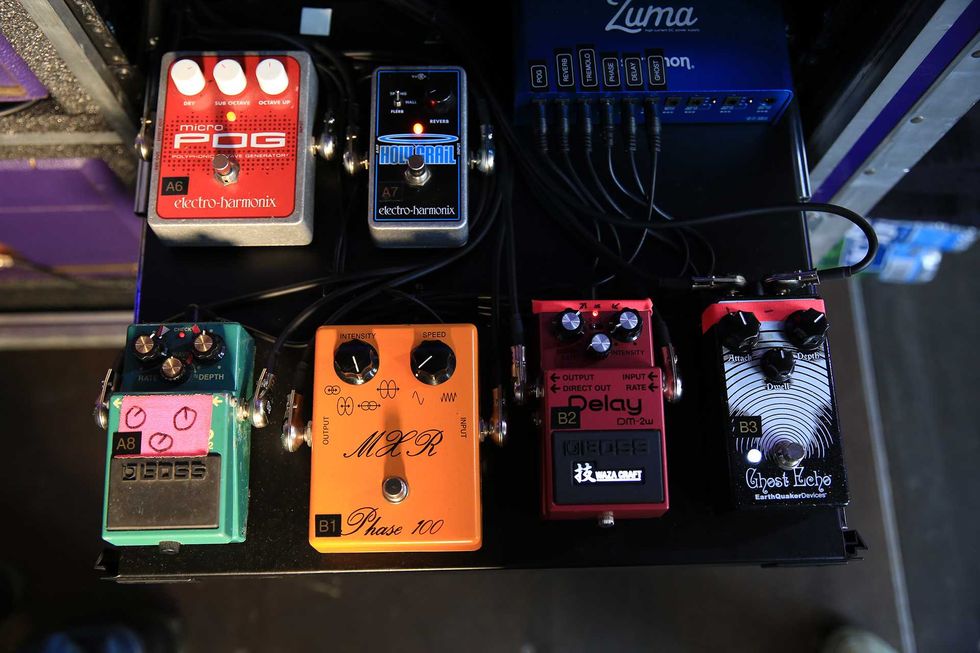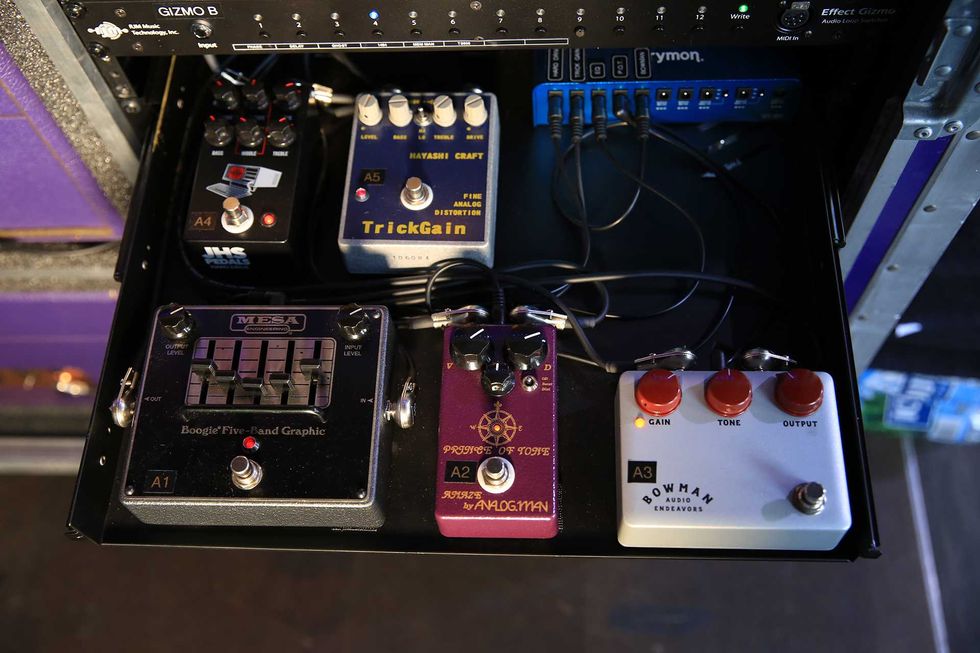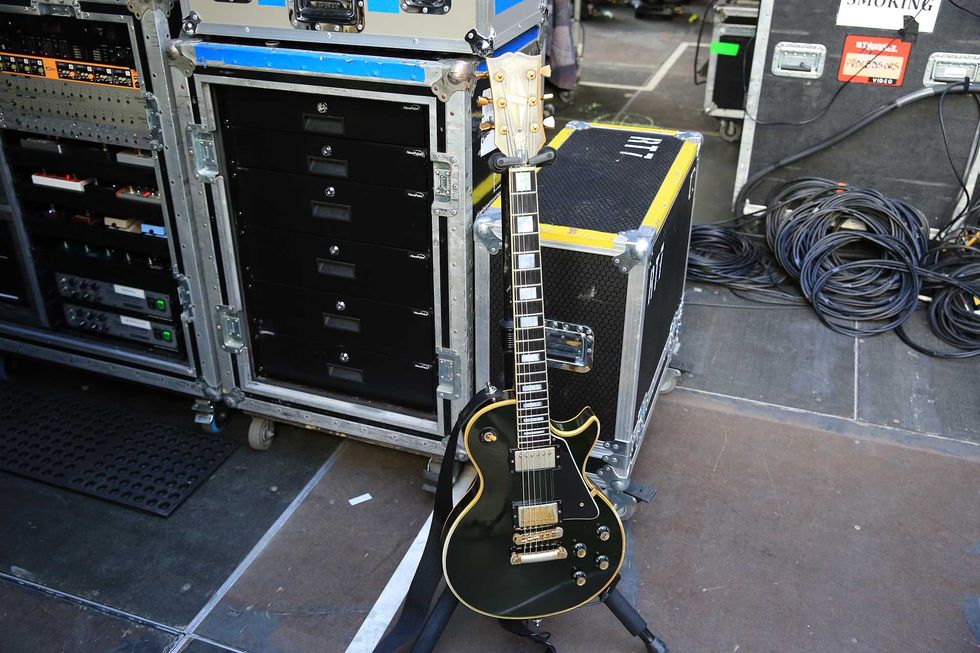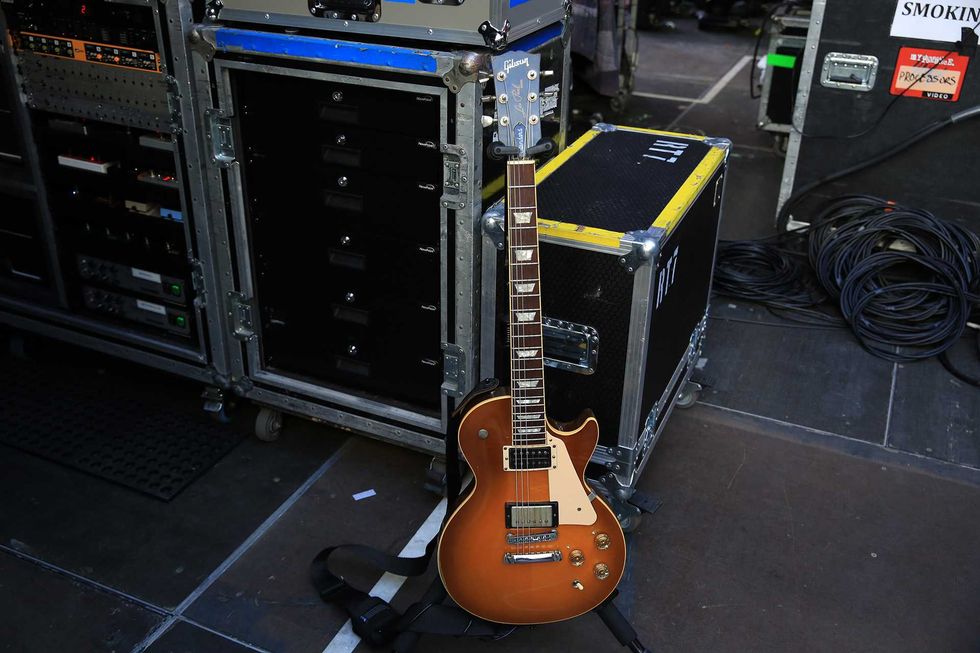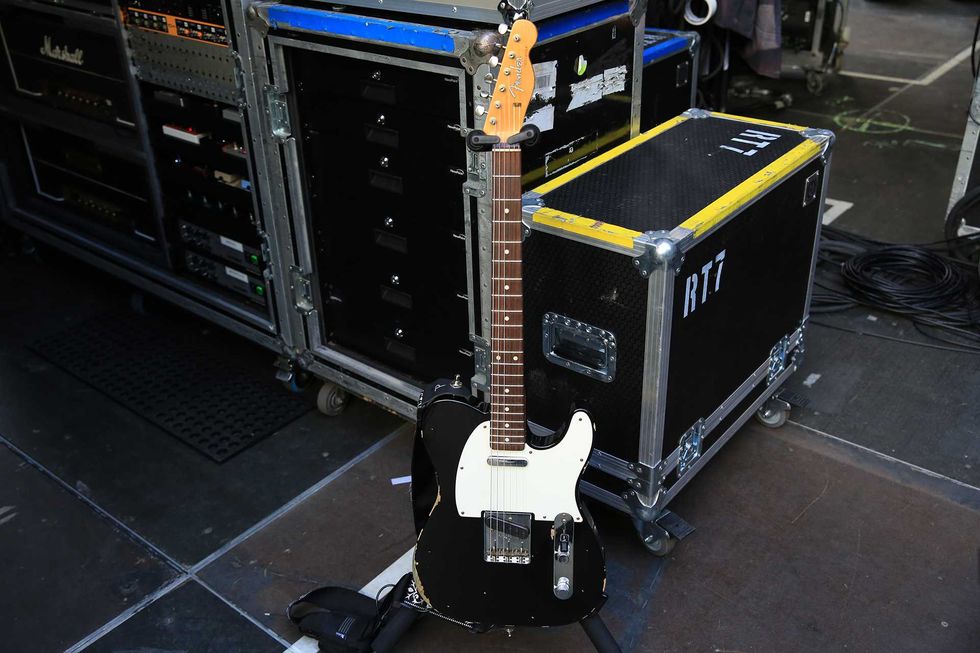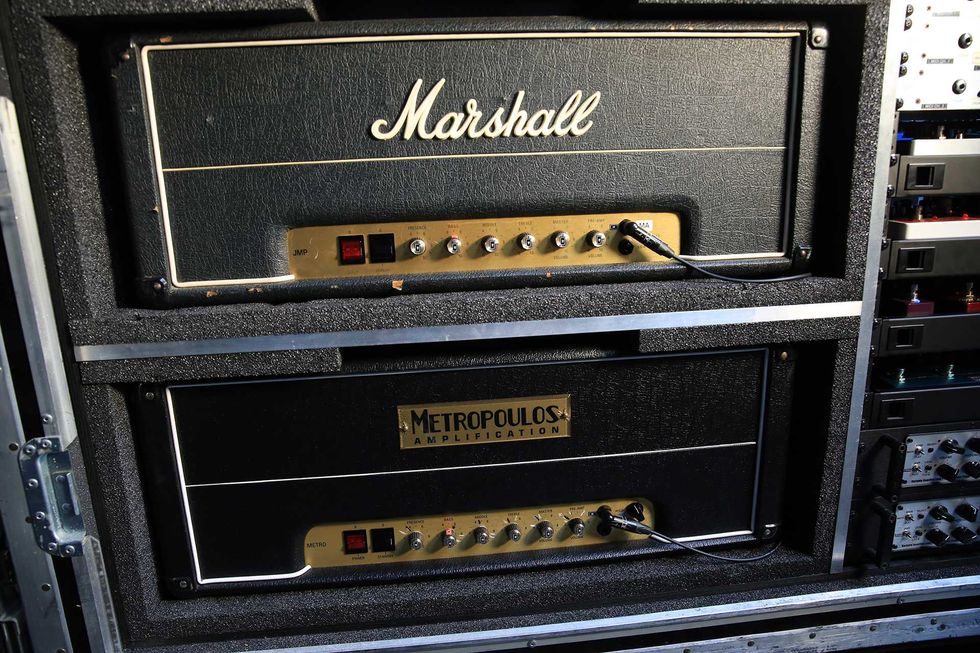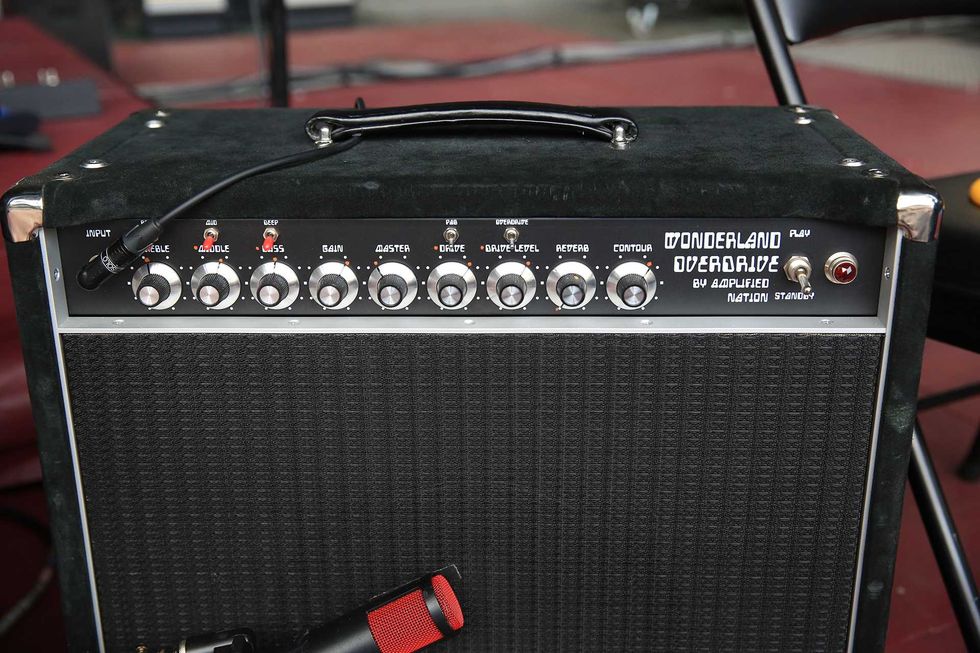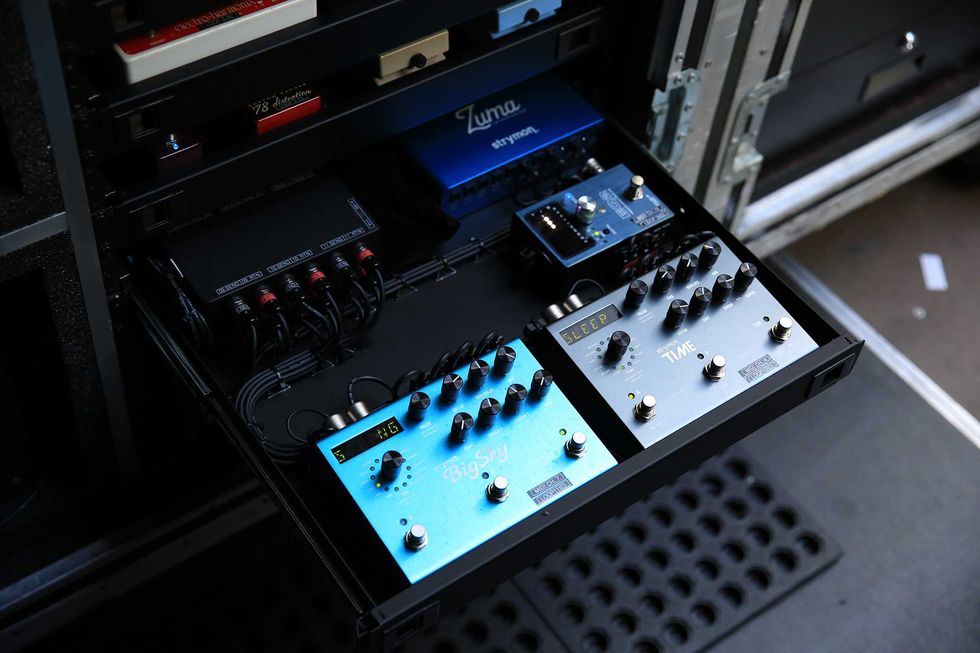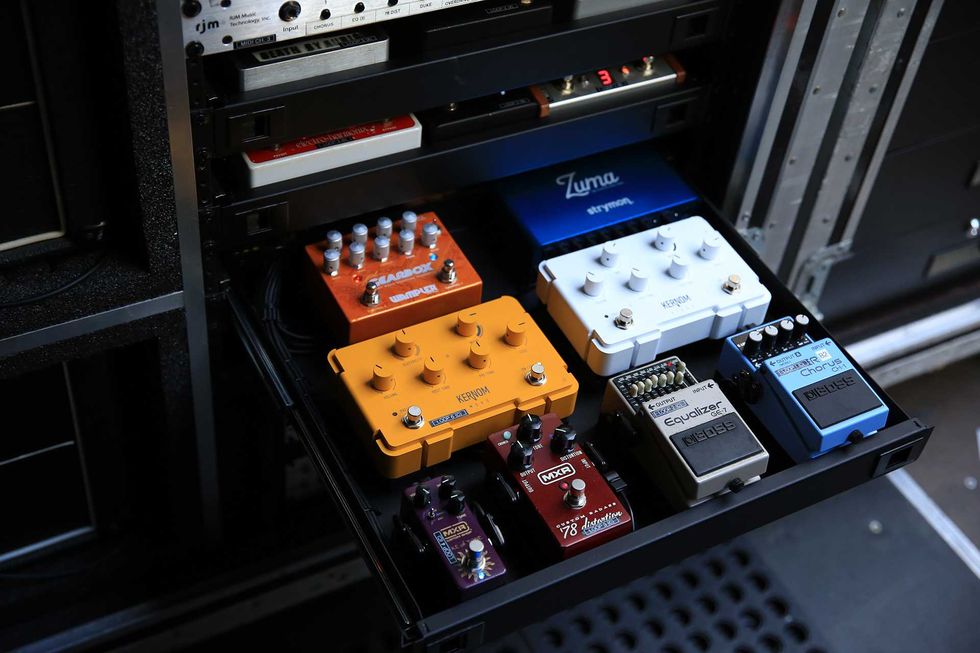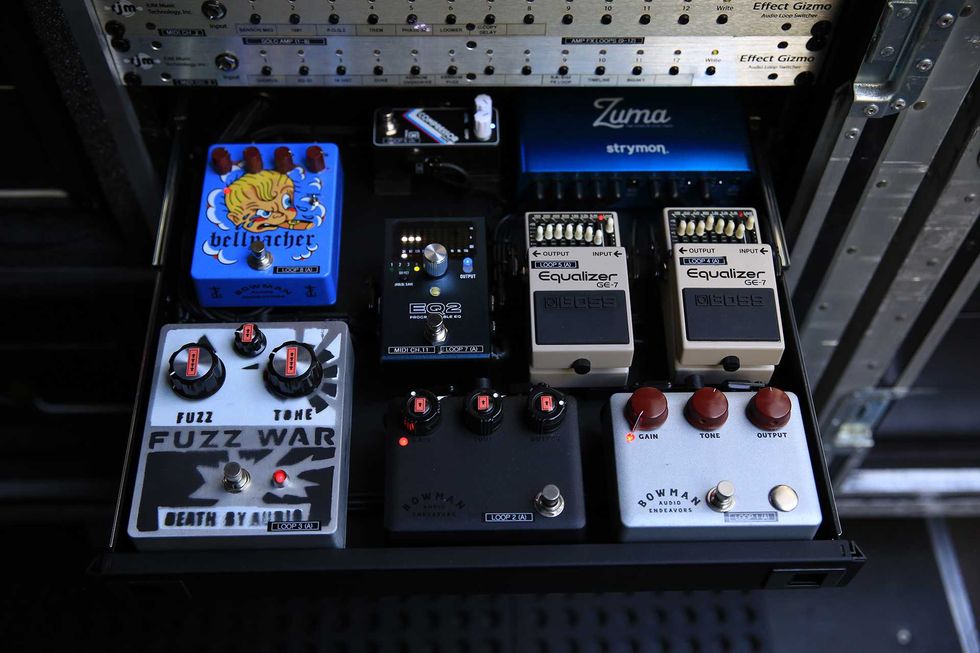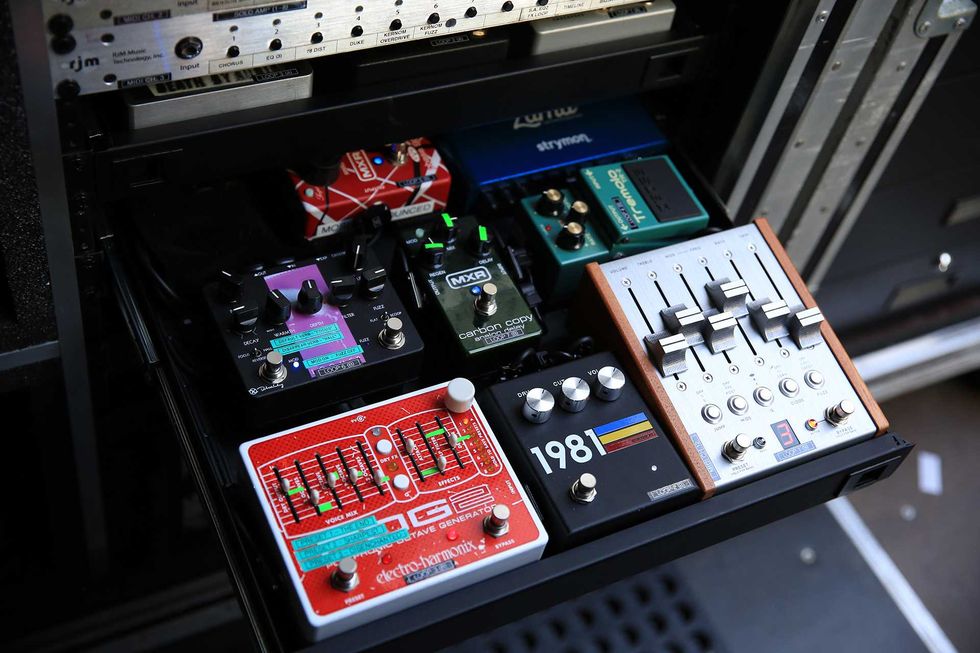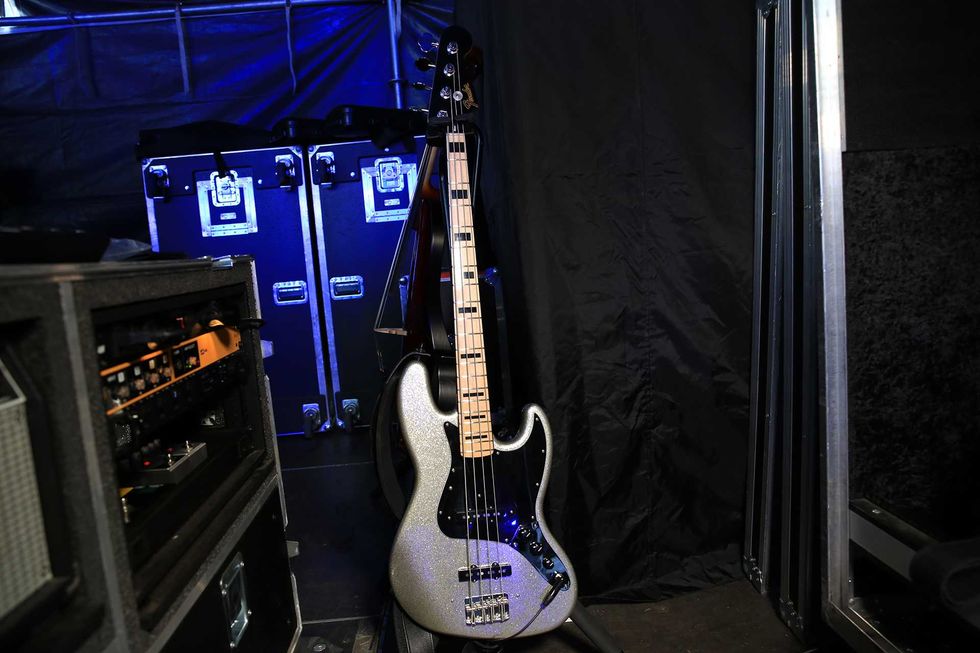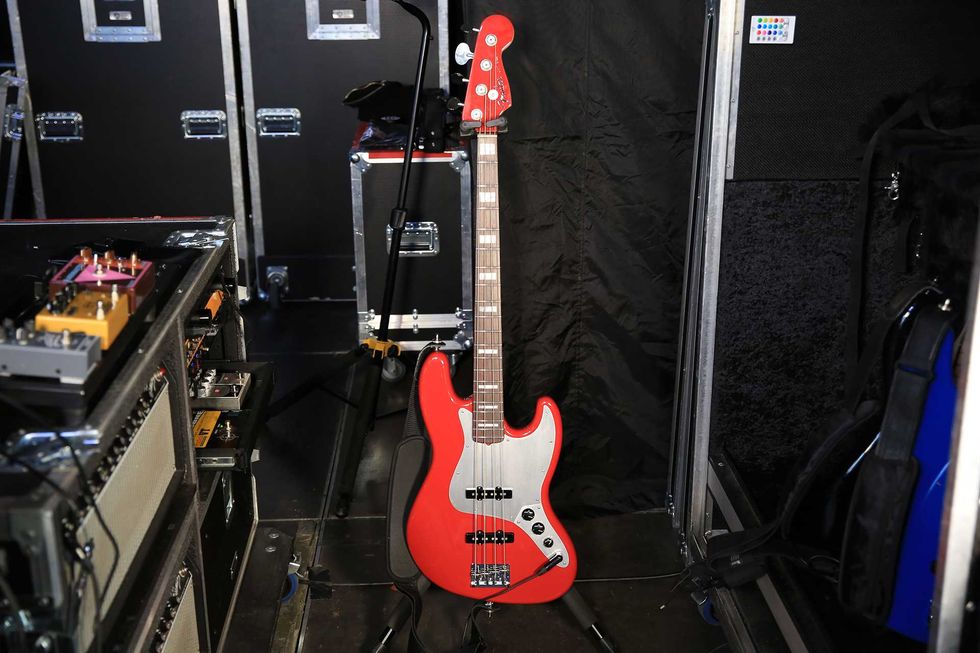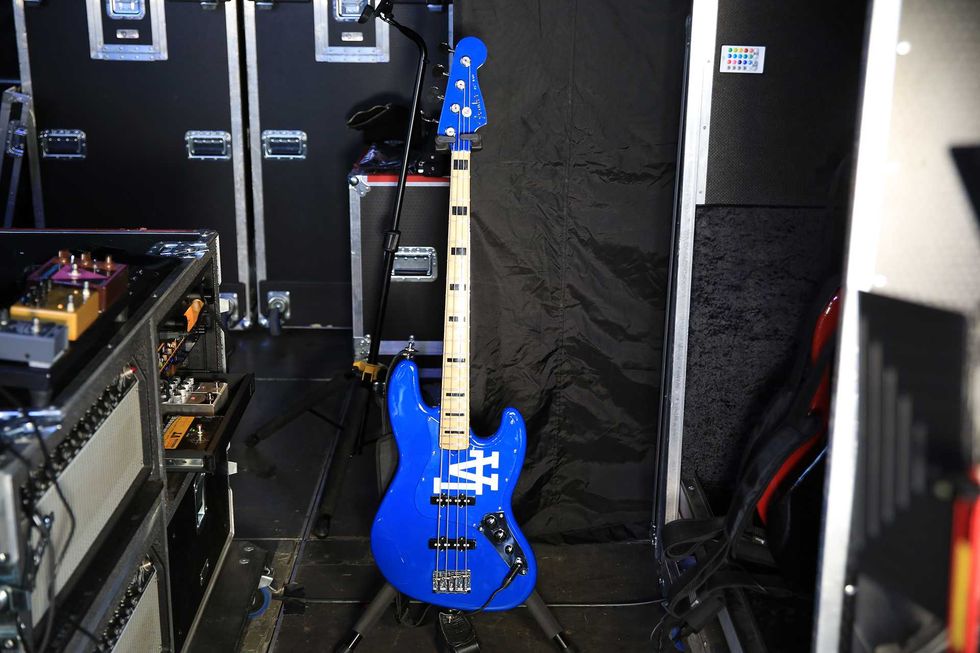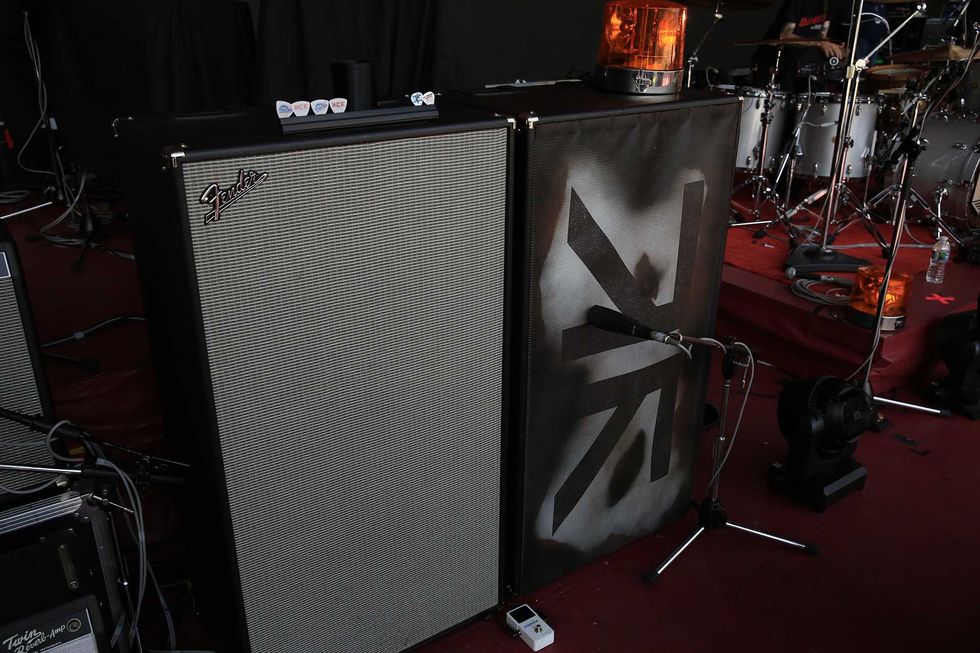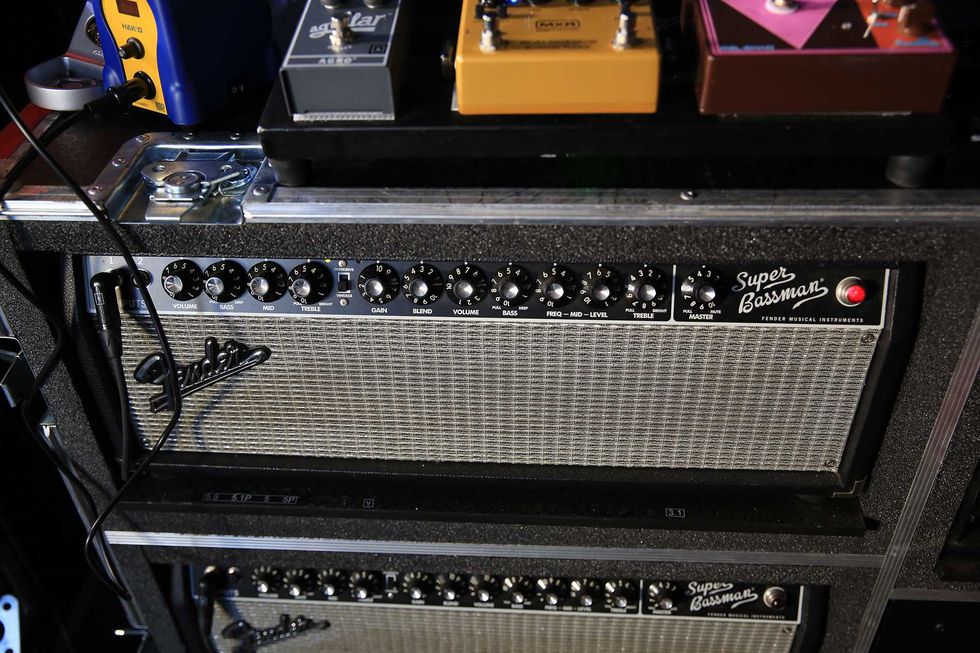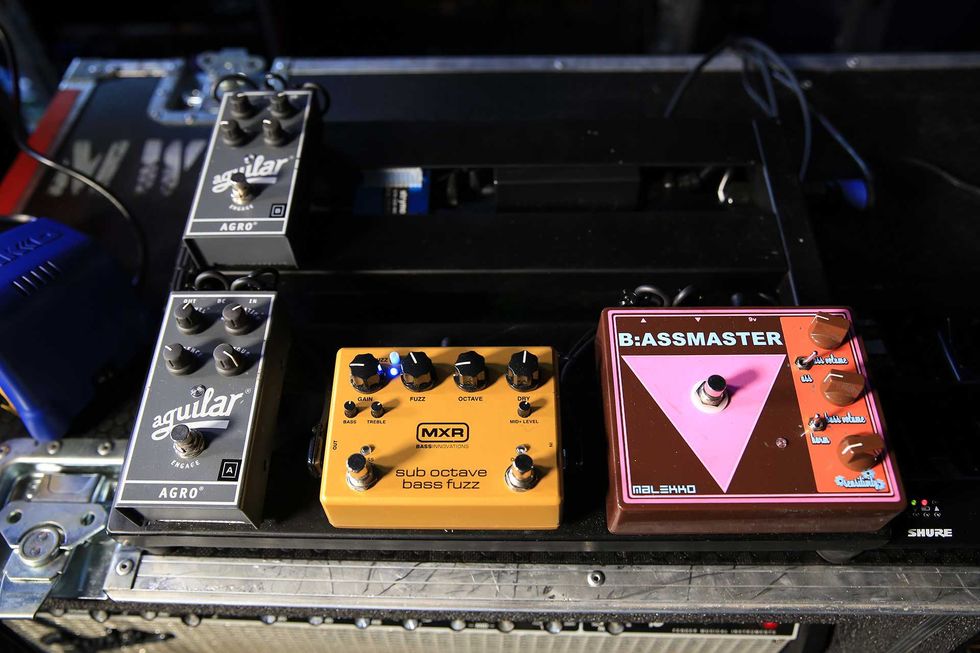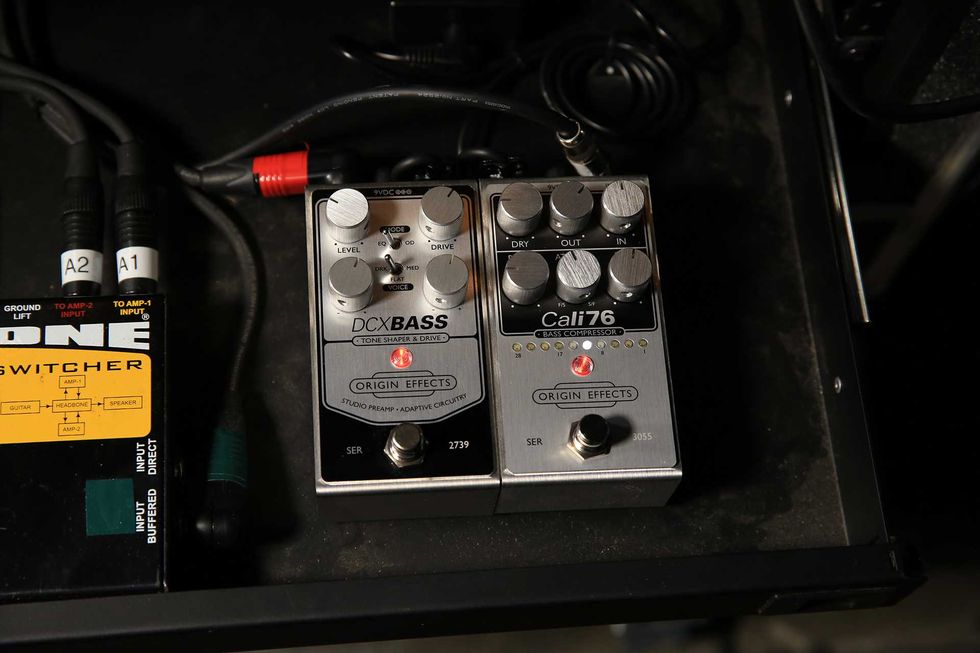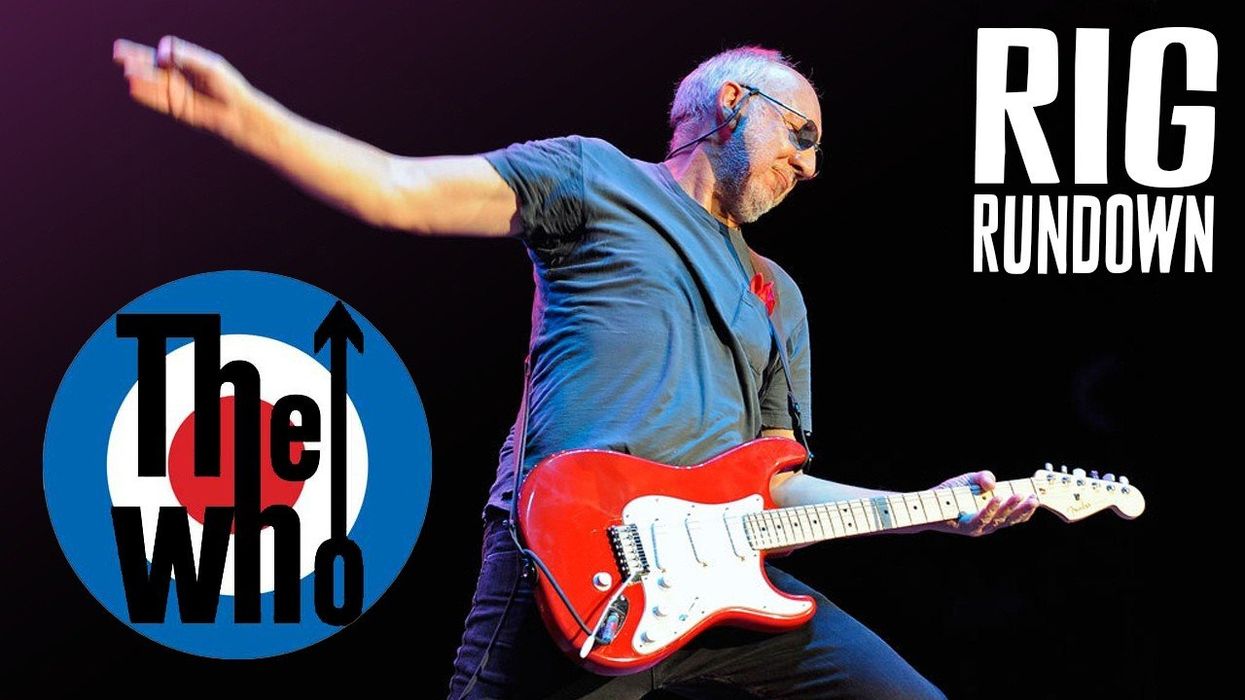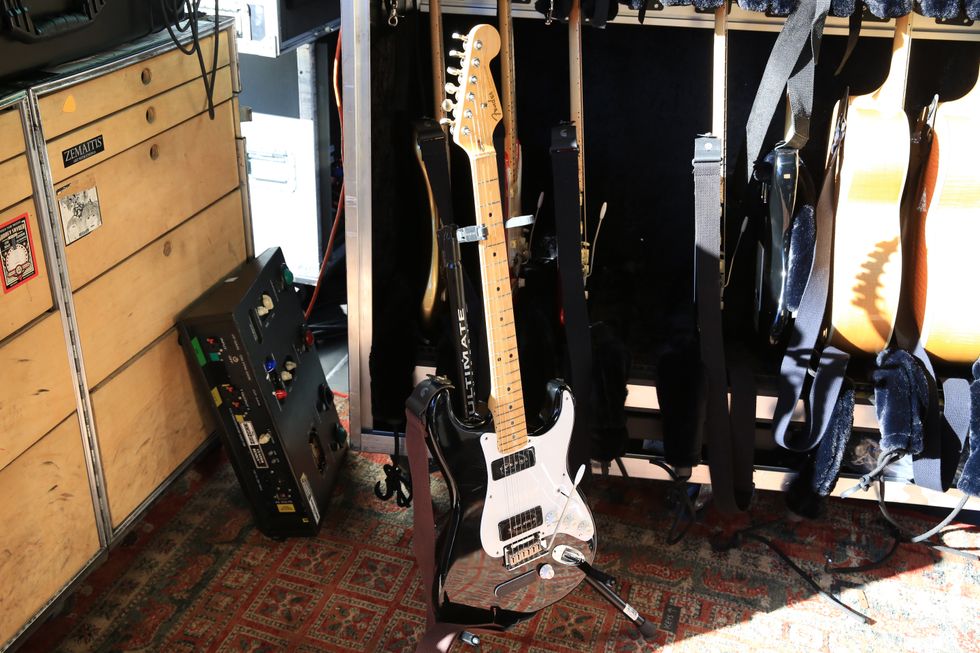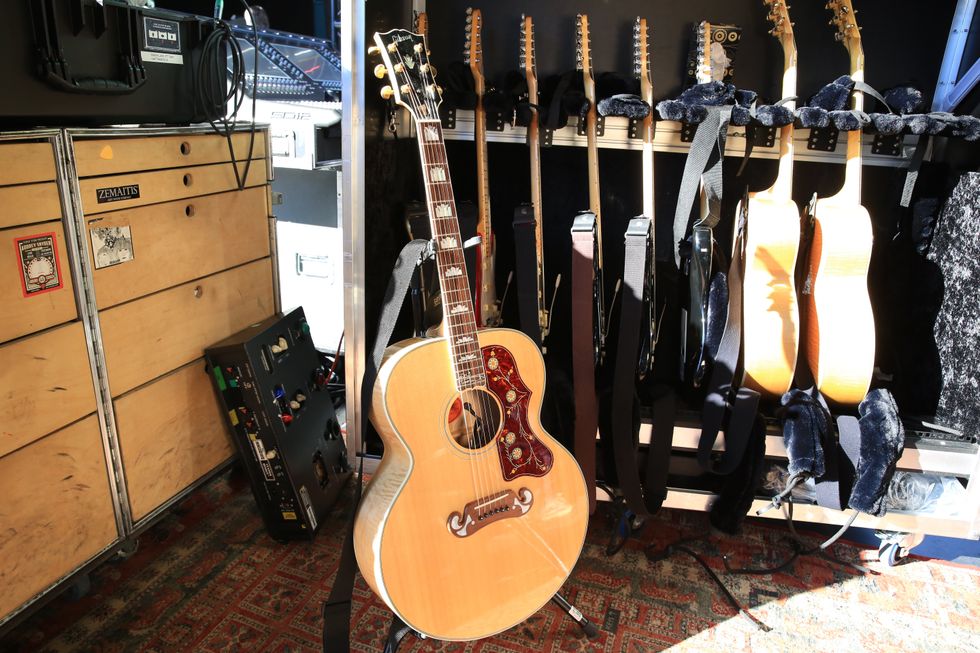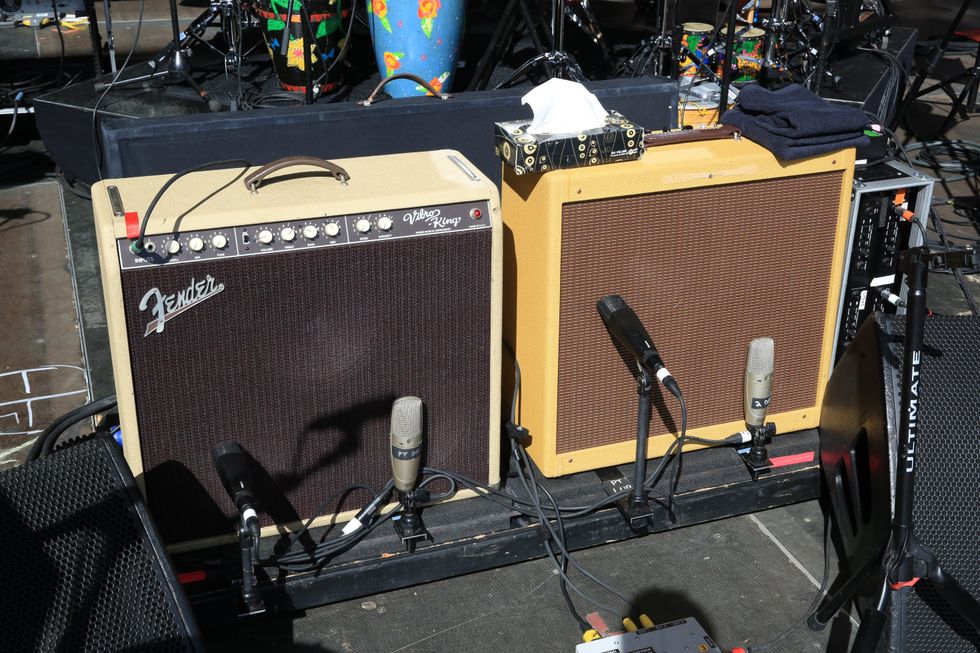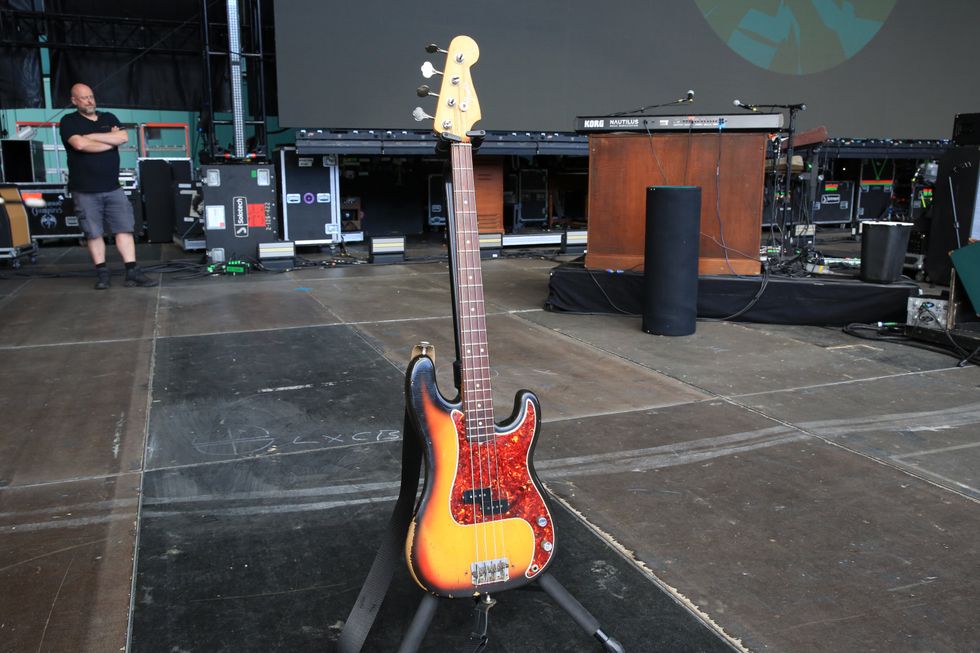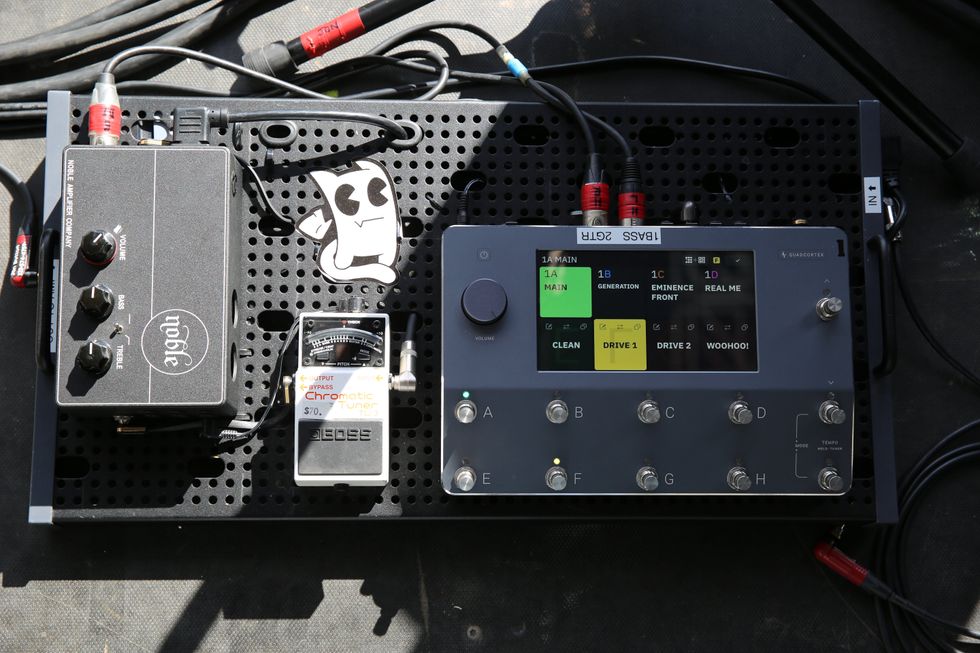These party-rockin’ tone hunters plug their idiosyncratic axes into gifted Klons, helping them turn Music City into riff city.
Nashville has long been the hub for all things country music but in the last two decades, transplant rockers like Jack White, the Black Keys, Megadeth’s Dave Mustaine, Judas Priest’s Richie Faulkner and others, have all have made the 615 home. Adding to its growth is the organic blossoms generated via the rock block, cultivating names like Paramore, All Them Witches, Bully, Moon Taxi, The Wild Feathers, The Band Camino, and the guitar extraordinaires that make up Diarrhea Planet.
We got caught up with the semi-retired fearsome foursome for their first headlining performance at the Ryman Auditorium ahead of their return to Bonnaroo. We covered why neck humbuckers are useless (but neck dives rule), how the whole band was gifted Klon KTRs, and what each shredator does to stand in and out among their collective guitarmegeddon.Brought to you by D’Addario dBud Earplugs.
73
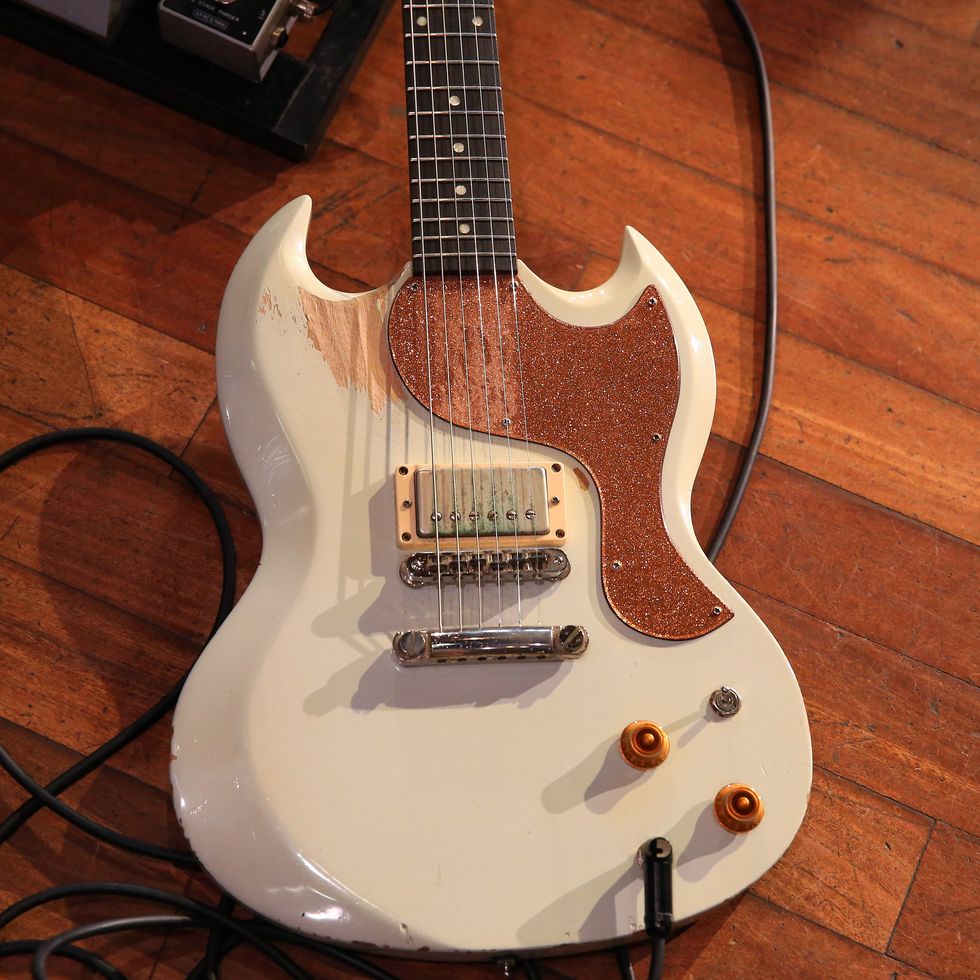
Diarrhea Planet’s unofficial 7th member is longtime tech and friend Dave Johnson of Scale Model Guitars. (Johnson has done several DIY features for PG, check them out!) Here is his 73rd build based on the Solid Guitar design. Constructed in 2015 it has an alder body, maple neck, and ebony fretboard. The alder was selected to keep the guitar’s weight under five pounds, the neck shape is based on a ’61 Melody Maker, and the fireworks ignite by way of the single Greer Wind humbucker wound by Porter Pickups. He opted for this one because it walks a fine line between a P-90 and PAF for a bouncy, rounder, snappier sound that sits best in DP. The switch is for a “high-octane” mod that bypasses the tone and volume controls and for a direct connection to the output jack for highway-to-the-danger-zone moments. He’s been loyal to D’Addario Medium Balanced Tension strings (.011 –.050) and Dunlop Tortex picks (.88 mm).
Diarrhea Planet Special
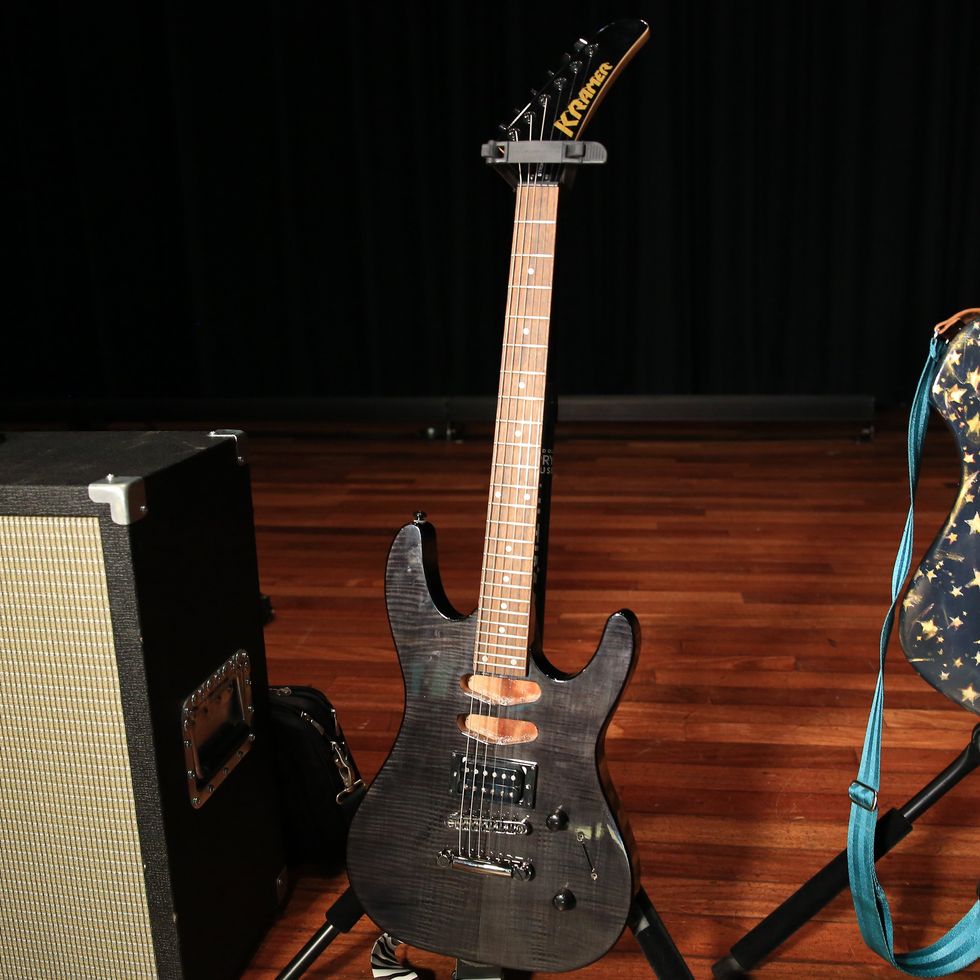
This bargain-bin bruiser is a Kramer Striker that cost Smith a mere $349. It has been overhauled by Dave Johnson in a recurring manner that includes Gotoh locking tuners, Graph Tech ResoMax bridge, removed the middle and neck pickups and dropped in a Bare Knuckle Nailbomb, and got a proper fret job and setup.
800 Killer

Smith has always been chasing a “bigger, more low-mid focused JCM 800” and this striking steal of a deal he scored fit the bill. The 120-watt Peavey 6505 runs into a Tyrant Tone 1x12 cabinet loaded with a single Electro-Voice Electro-Voice EVM12L Black Label Zakk Wylde speaker.
Jordan Smith’s Pedalboard
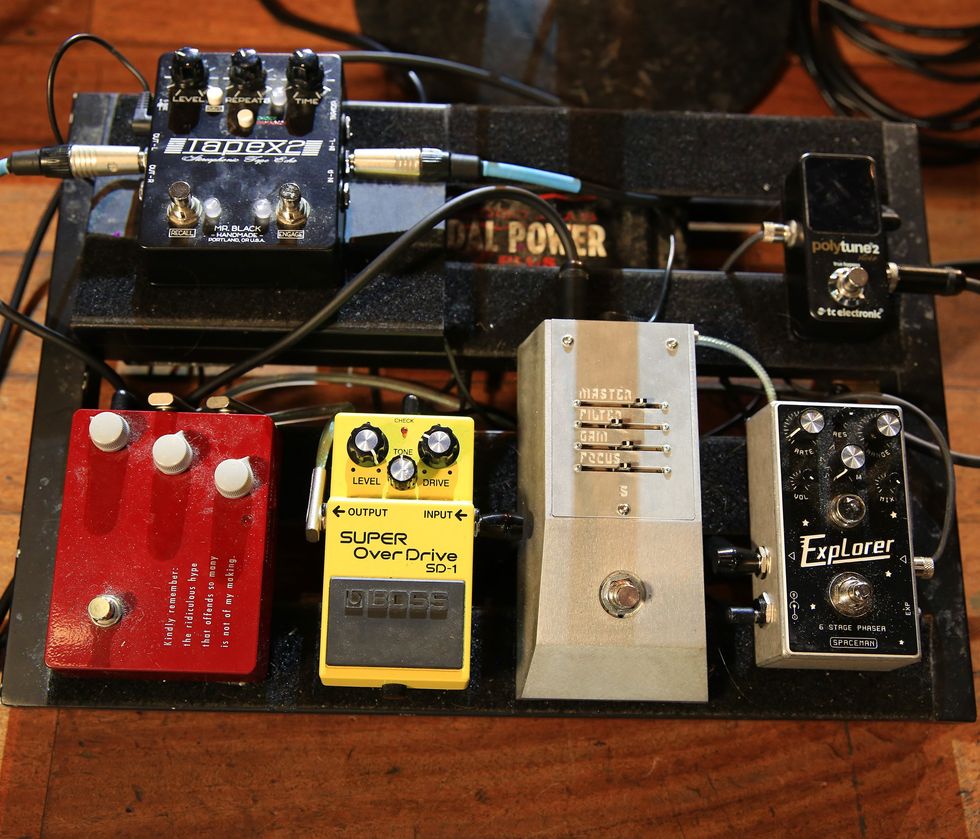
Smith’s board holds the staples for DP gigs. It starts with a Spaceman Effects Explorer Phaser, an Electronic Audio Experiments 0xEAE Boost (his favorite pedal on the planet), Boss SD-1 SuperOverdrive, and a Mr. Black Tapex 2. Diarrhea Planet might be the only band to earn KTRs. Back in 2014 or ’15, Klon creator Bill Finnegan and his employee Matt visited DP during a soundcheck near their East Coast-based shop. Finnegan loaned the foursome their own KTR to test out during the run-through. They plugged into them and instantly realized this was the sound they’ve been missing. Finnegan enjoyed the soundcheck so much that he told the band they deserved the magical red boxes and they’ve been on their boards ever since. “I’ll never sell it because we somehow impressed the guy that built one of the most influential pedals ever. It’s an honor and it means so much to me,” admits Smith. Everything rides on a Pedaltrain Classic Jr and is brought to life with a Voodoo Lab Pedal Power 2 Plus.
Dave Does It Again!
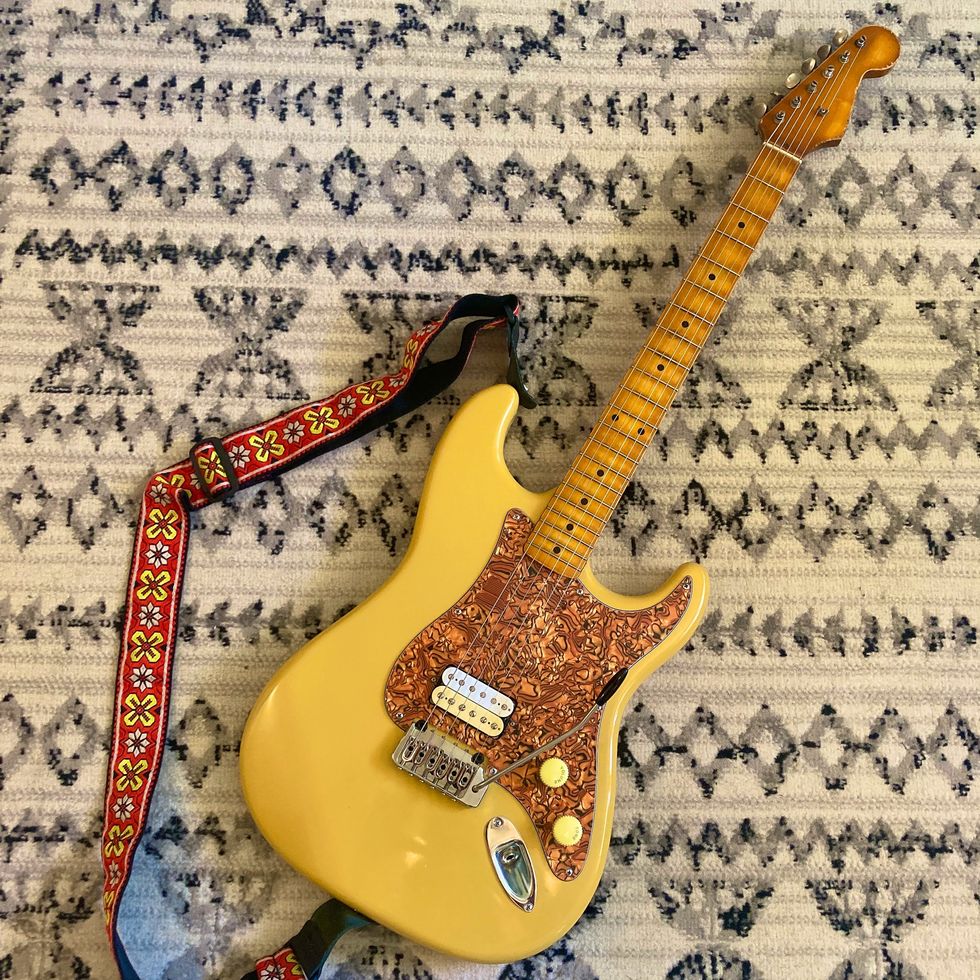
Brent Toler hit the Ryman stage with one guitar—his partscaster baby. Brent sourced all the parts (including painting the body in his parents’ garage) and luthier pal Dave Johnson helped put the pieces together. The single humbucker (with a push-pull pot engaging single-coil mode) was handwound by Alex Avedissian out of Atlanta. It has a HipShot bridge with an upgraded Hipshot Tremsetter Strat tremolo Stabilizer 401000. The roasted maple neck and dazzling pickguard was scooped off eBay. He recently switched from D’Addario strings to local faves Stringjoy.
Steal of a Deal
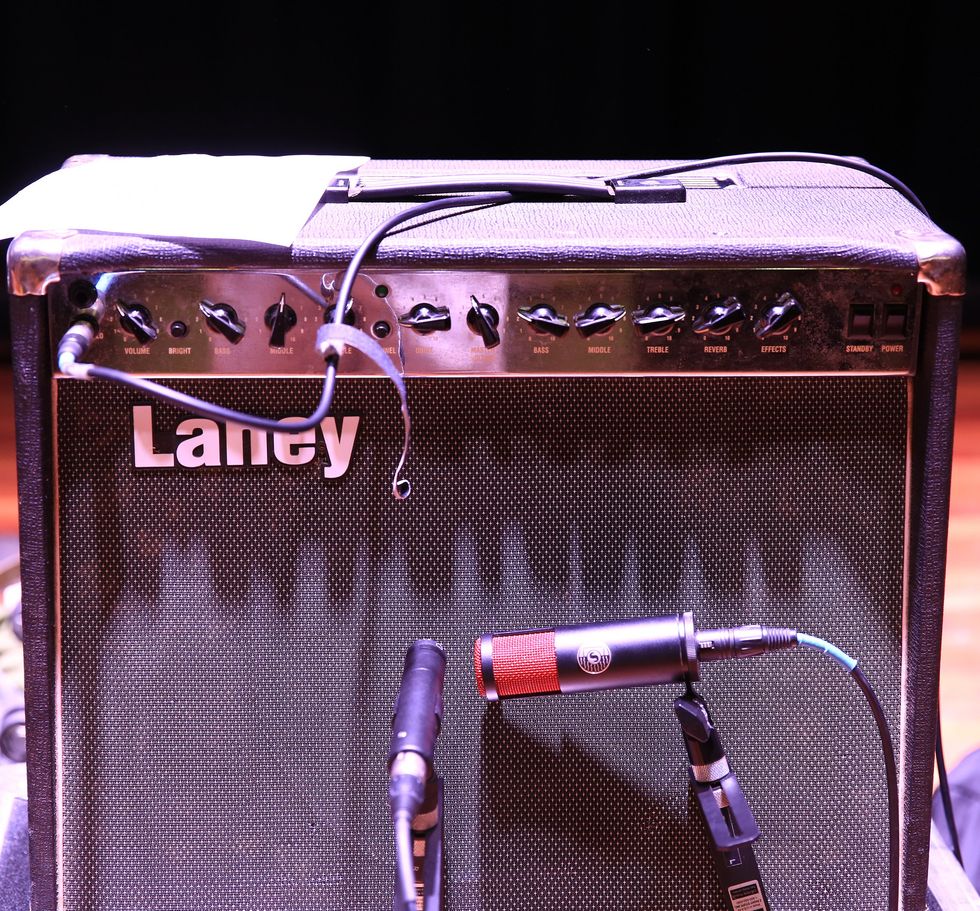
Traveling into town for this pair of shows, Toler packed light with just his partscaster and a pedalboard. He borrowed this Laney LC30 from bassist Mike Boyle who scored the 1x12 tube combo for $200.
Brent Toler’s Pedalboard

Paring down for carry-on limits, Toler returned to Guitar Town with a svelte pedal platform home to five effects and a tuner: a MXR Carbon Copy, a Mooer Yellow Comp, a Bogner Ecstasy Blue, Klon KTR, a MXR Phase 95, and an Electro-Harmonix EHX-2020 Tuner Pedal.
Mother’s Mark
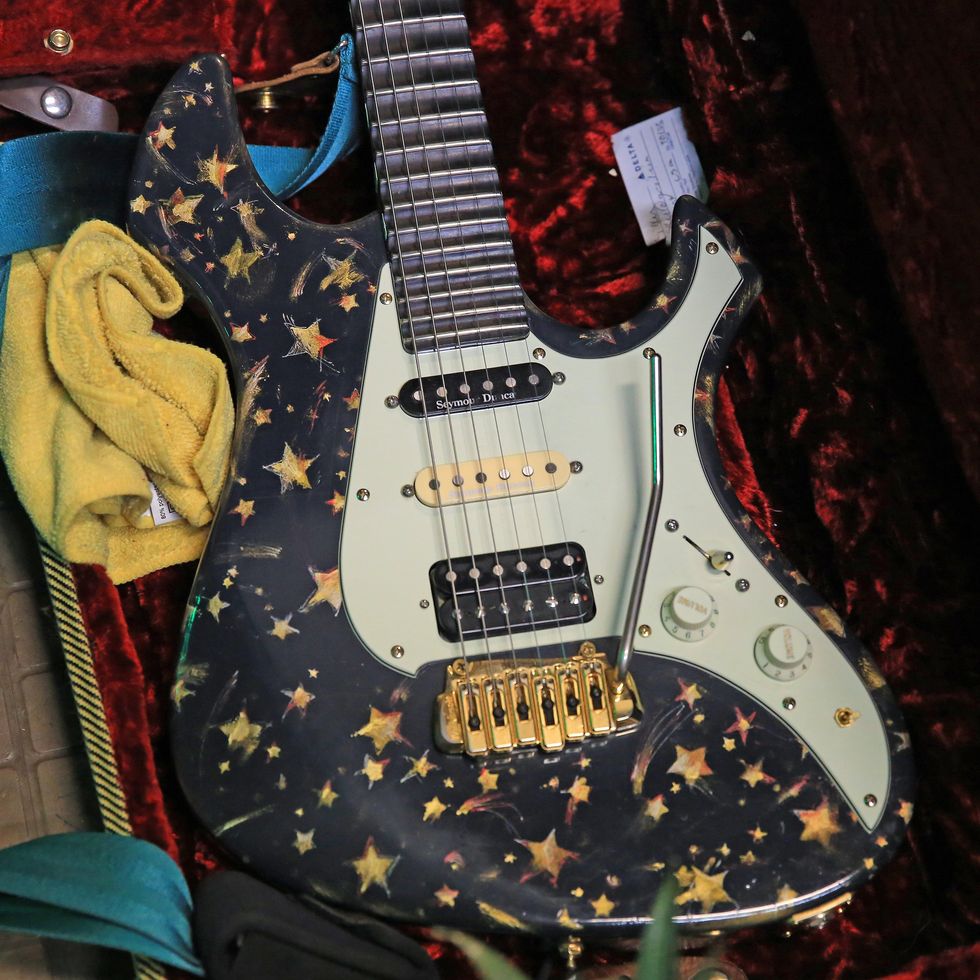
Standing out is a must when you’re battling frequencies with three other guitarists. Emmett Miller takes a left when his brethren take a right. His custom guitar (again built by Scale Model Guitars’ Dave Johnson) is a loving recreation of a ’80s Fender Performer. Miller first got a taste of the futuristic axe when studying at the National Guitar Workshop under Shane Roberts. He posted on Craigslist in the hopes of borrowing a Performer to copy for Dave to build from. He quickly received an anonymous response that included a complete blueprint of the instrument. It has 24 scalloped frets on an ebony fretboard, a Wilkinson/Gotoh VS-100N Tremolo bridge the middle and neck pickups are Hot Stack Plus Strat hum-canceling single-coils, a handwound Avedissian humbucker in the bridge (with a coil-spot mod), and the smaller dip switch adds in the neck pickup with the bridge humbucker. And the best part of the whole thing, the night-sky artwork was painted by Emmett’s mother.
Tone School
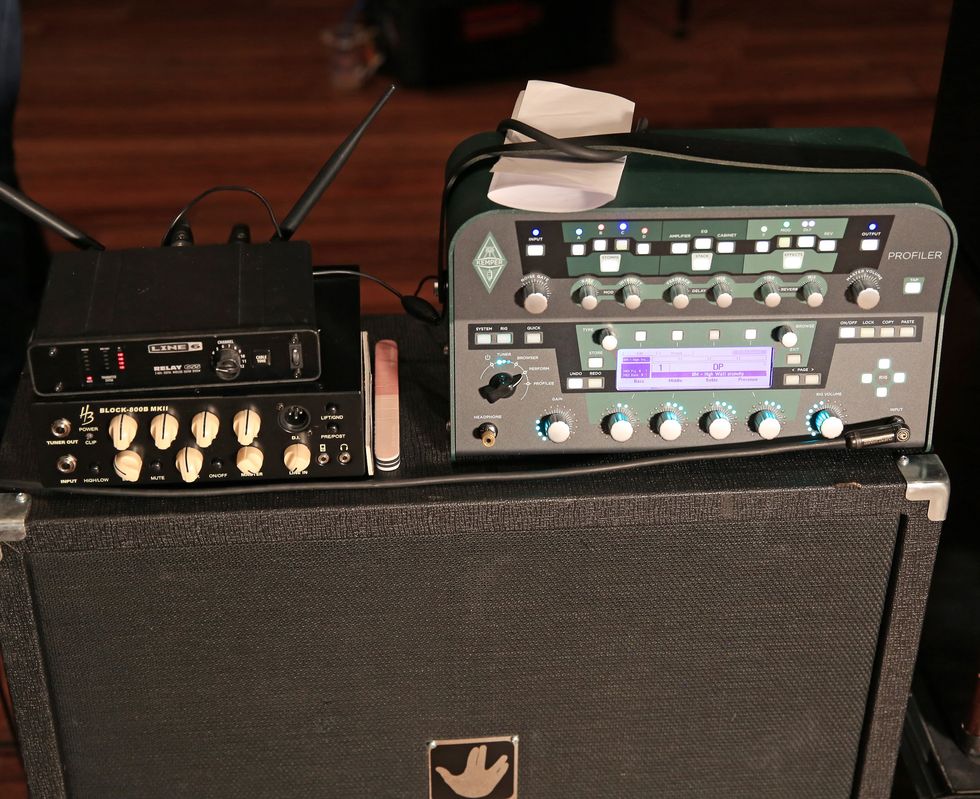
When DP first disbanded in 2018, Miller went off to school to study electrical engineering and digital signal processing, and in doing so, he “had to play through a computer now.” He landed on the Kemper Profiler and hasn’t looked back. He avoids cabling and routes his guitar through a Line 6 Relay G55 Wireless unit.
Emmett Miller’s Pedalboard
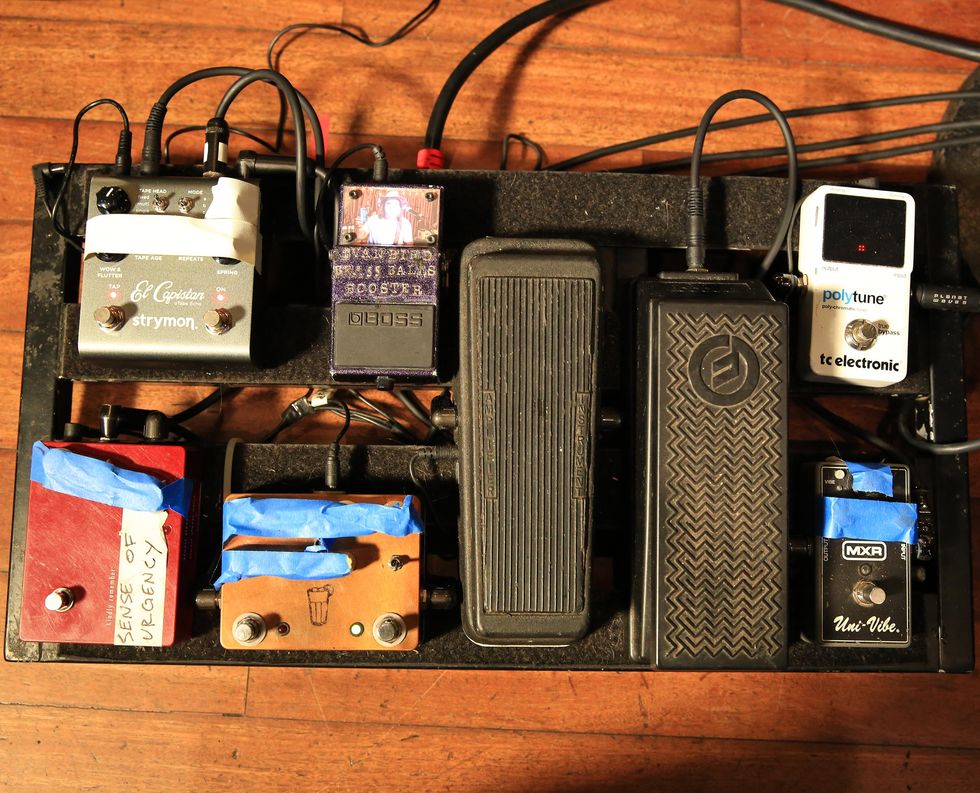
Keeping the Kemper on amp-only duties, Miller has a standard pedal playground comprised of a Strymon El Capistan, a Klon KTR, a JHS Sweet Tea V3, Dunlop Cry Baby wah, a Moog EP-3 Expression pedal, a MXR Uni-Vibe, and a TC Electronic PolyTune. Up top you might notice what appears to be a Boss pedal enclosure, but that’s just a goof gift from fellow guitarist Evan Bird.
The Classiest and Nastiest
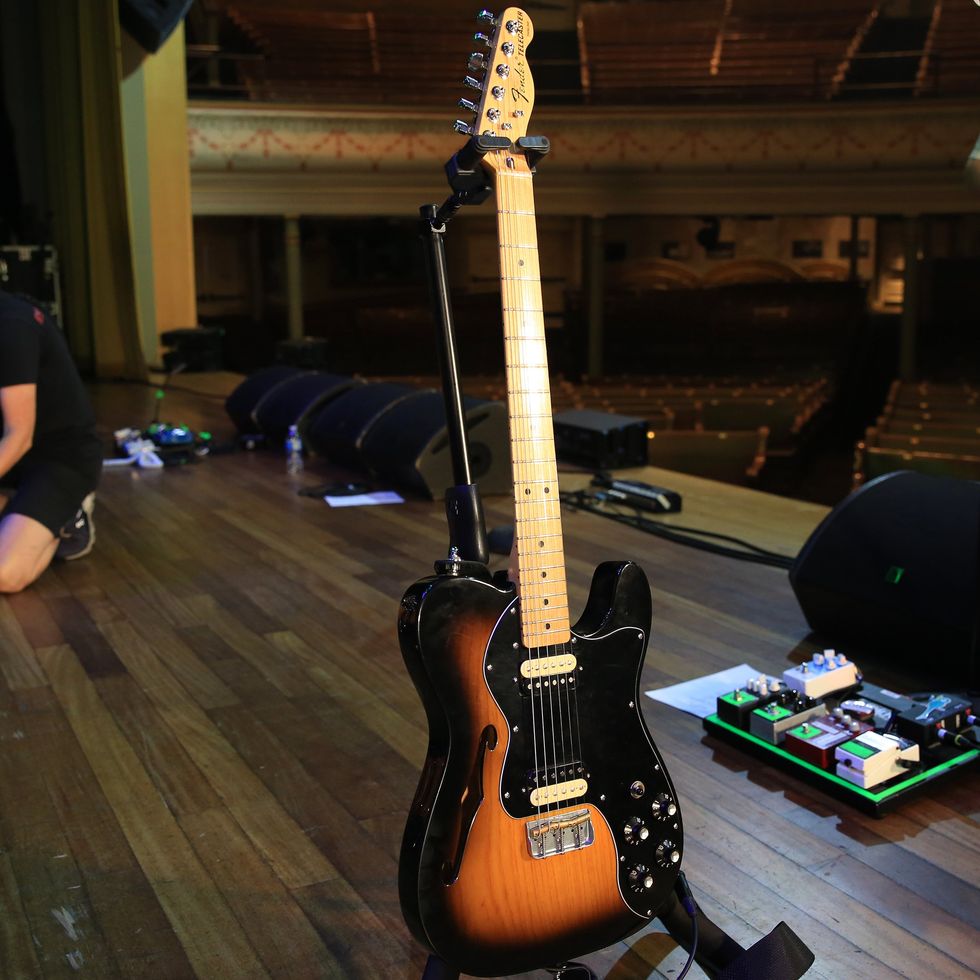
“I think, in my arms anymore, anything but a Tele feels weird. I do like other guitars, but these are the only ones I can throw around and then still pick back up and play,” concedes DP’s fourth guitarist Evan Bird. This MIM Fender Telecaster Thinline Deluxe was facelifted by Dave Johnson (shocker). It got a refret, improved hardware—including a 3-barrel brass bridge, Gotoh locking tuners, and strap locks—plus a fresh set of Avedissian Night Prowler humbuckers (with a push-pull coil-split mod on the bridge ’bucker). Both his Teles take D’Addario NYXL1052 Light Top/Heavy Bottom strings.
That’s Gold, Jerry, Gold!
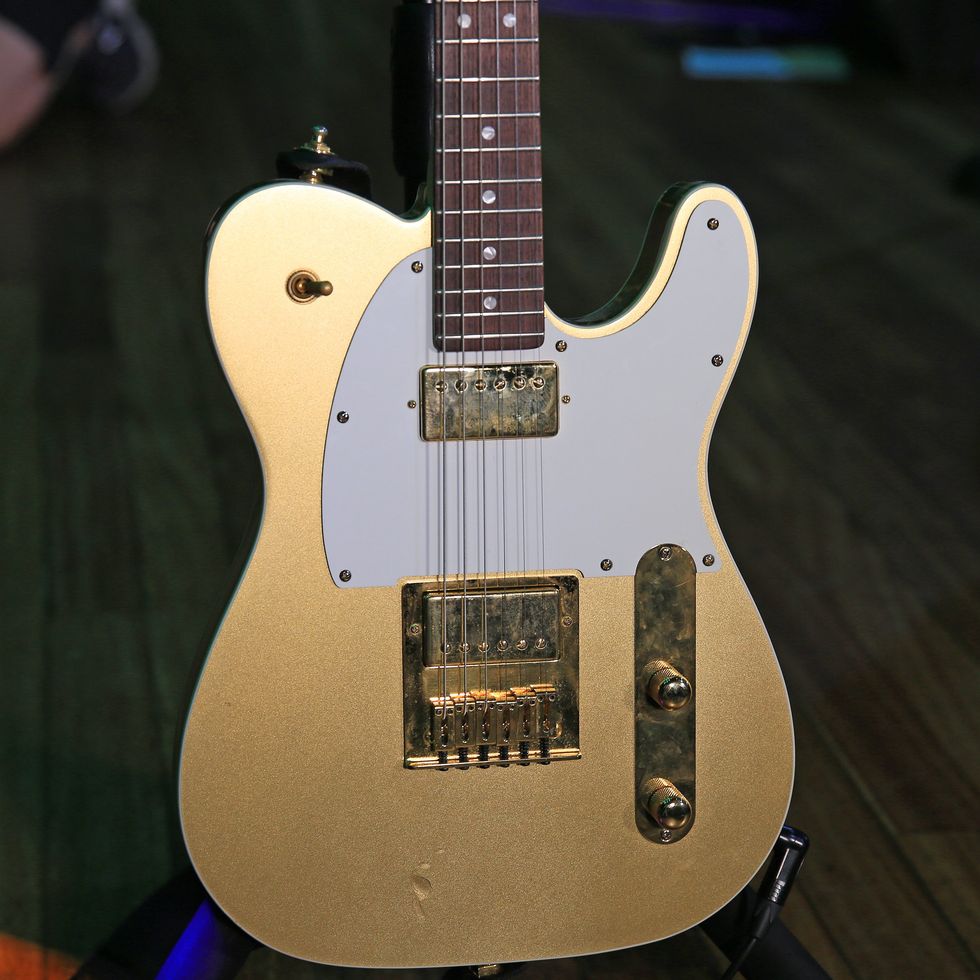
Supplementing duties with Thinline is this Squier John 5 signature that’s finished in Frost Gold. It got the Dave Johnson Scale Model treatment and also features Seymour Duncan Pearly Gates with Les Paul-wiring and CTS pots.
Tubes, Schmubes
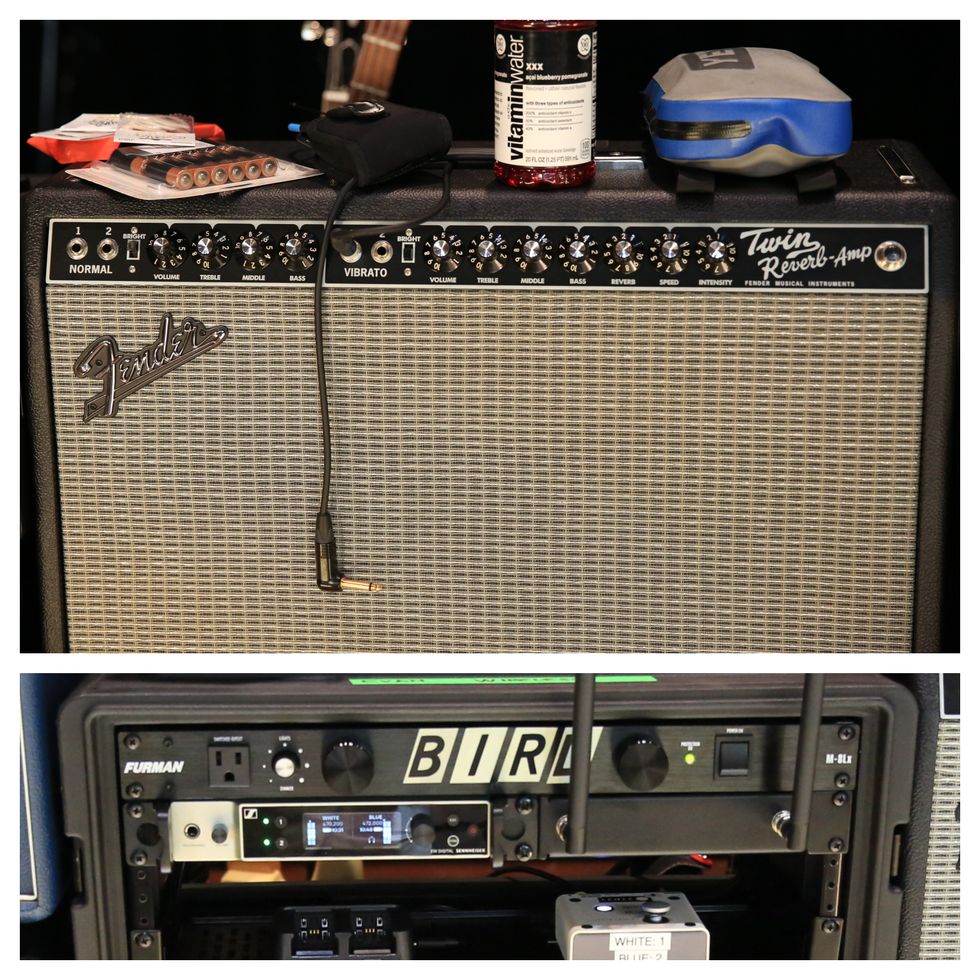
After toting around a hefty Twin Reverb for years, Bird made the back-saving switch to a Fender Tone Master Twin Reverb that knocks off half the weight. Another issue he was having with the OG tube Twin was blowing up the preamp section by hitting it too hard with pedals. Since making the move to the Tone Master, he’s been flying clear of any meltdowns. And keeping the cables away from his feet is the Sennheiser EW-DX EM 2 Two-Channel wireless unit.
Evan Bird’s Pedalboard
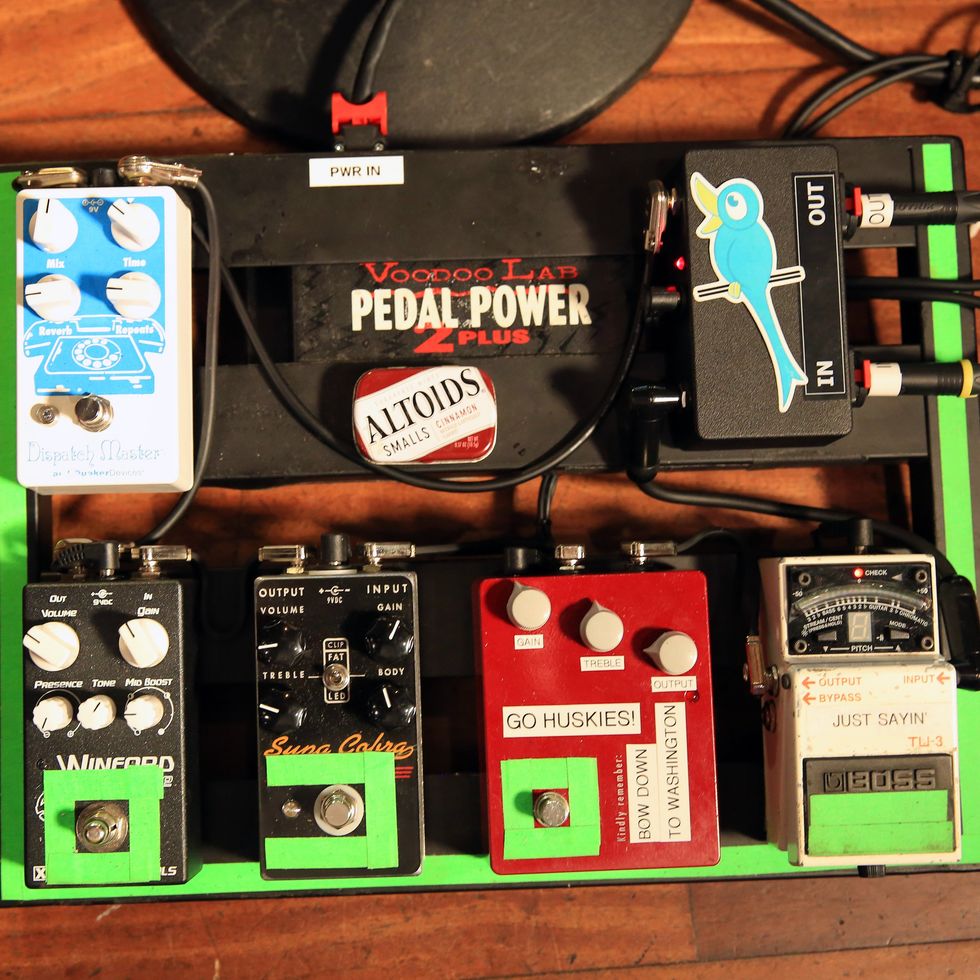
Bird keeps it lean and mean with a 4-stomp pedalboard that includes an EarthQuaker Devices Dispatch Master, XTS Winford Drive, Greer Amps Supa Cobra, and a Klon KTR. Occasional tuning is assisted by the Boss TU-3 and a Voodoo Lab Pedal Power 2 Plus brings the juice.
Shop Diarrhea Planet's Rig





![Rig Rundown: AFI [2025]](https://www.premierguitar.com/media-library/youtube.jpg?id=62064741&width=1245&height=700&quality=70&coordinates=0%2C0%2C0%2C0)
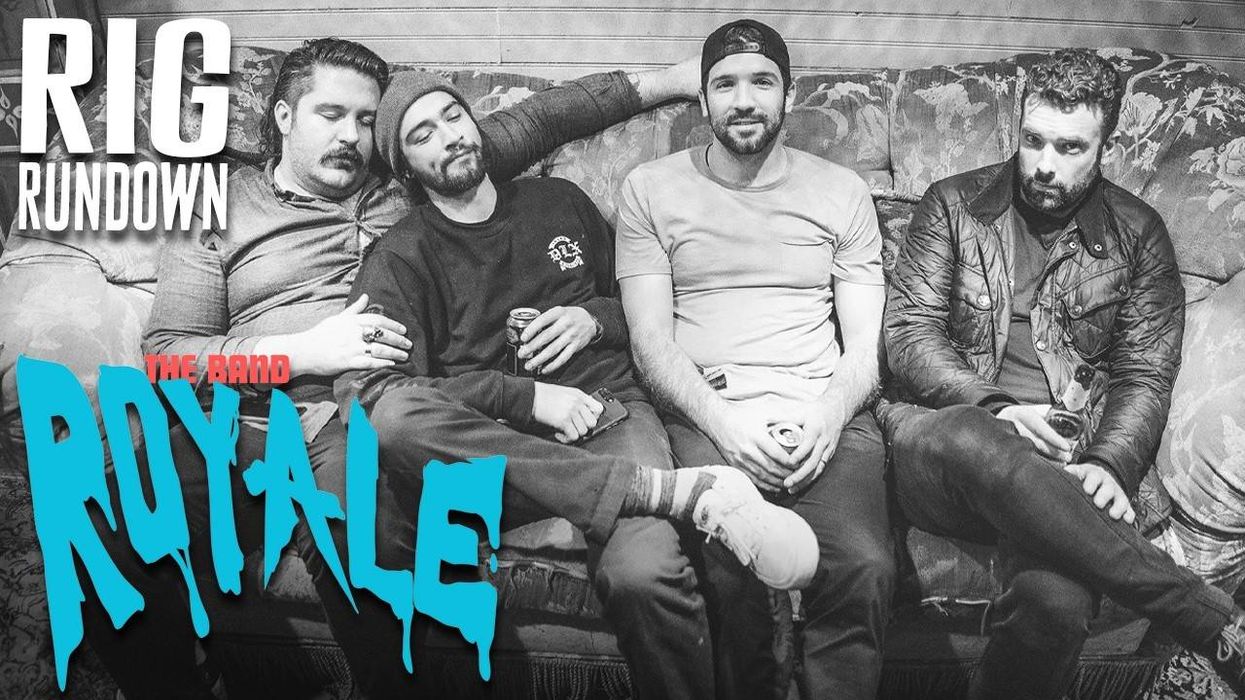
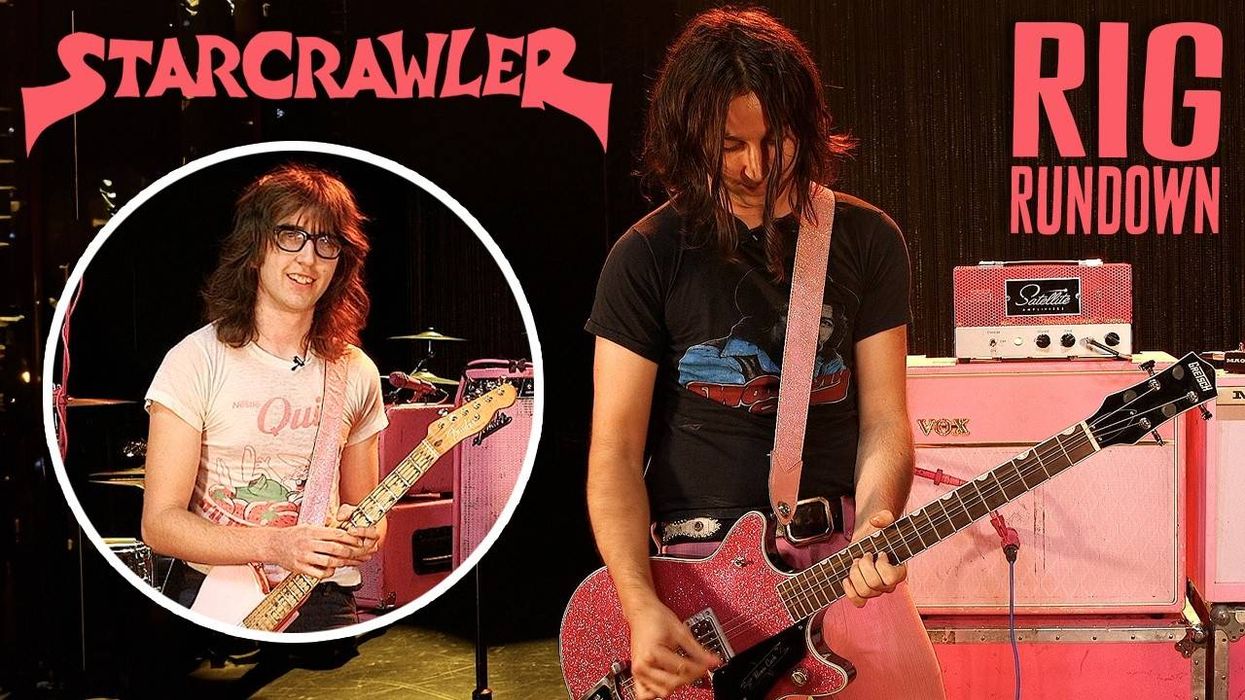
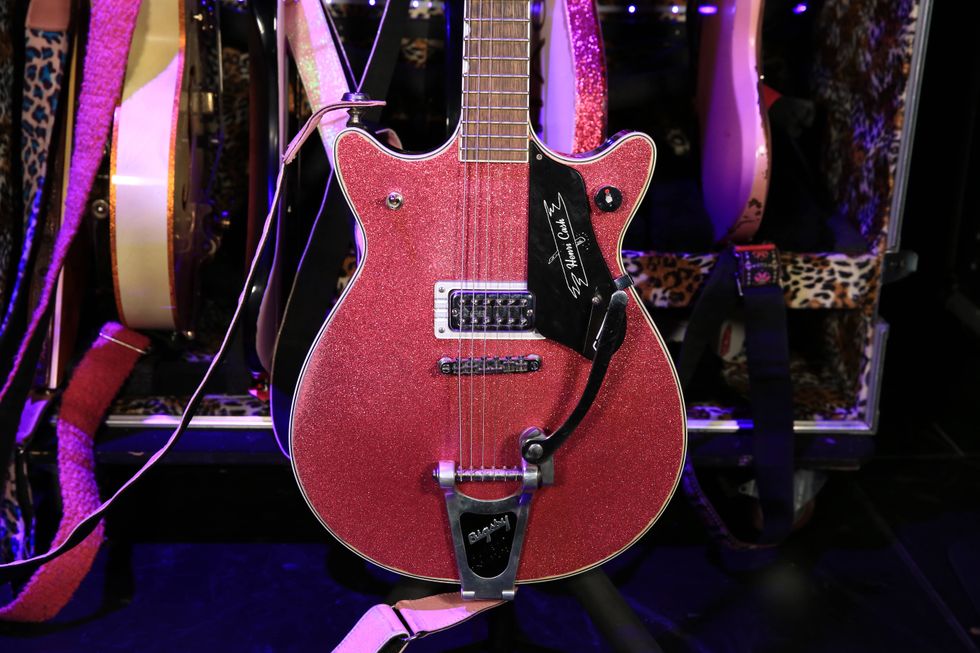
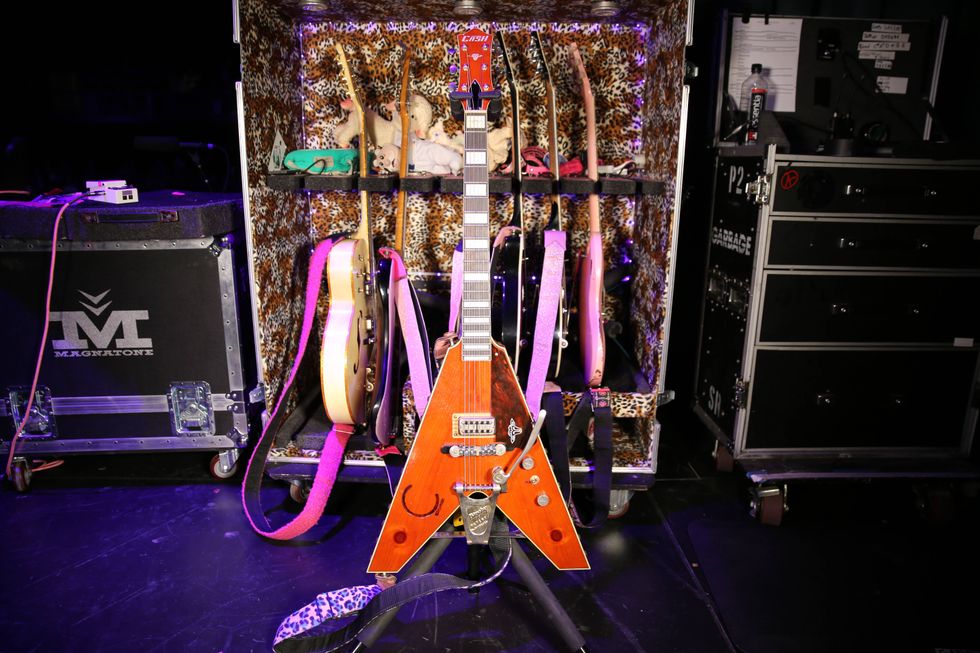
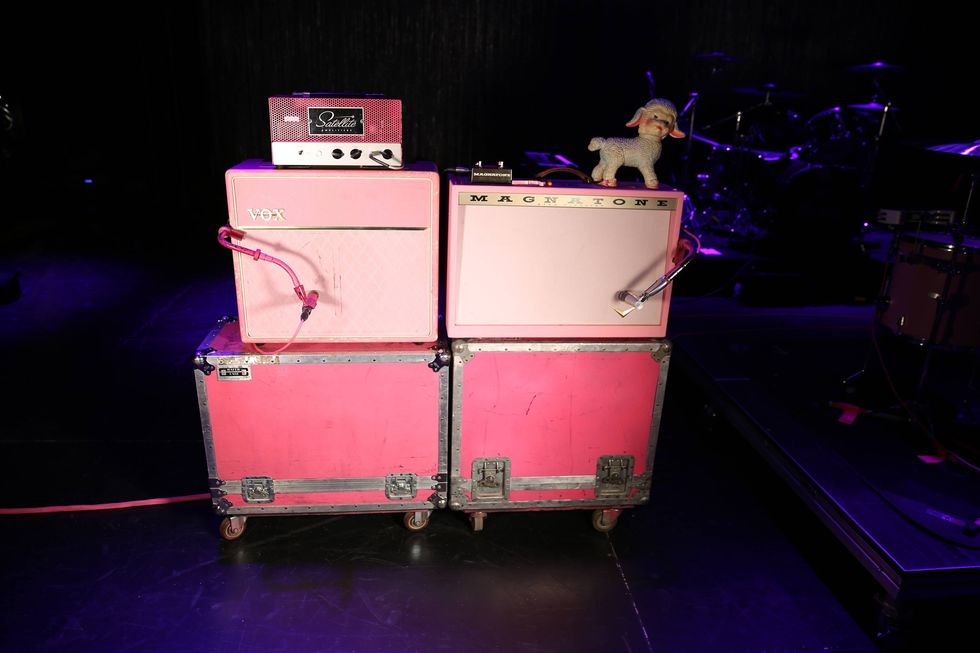
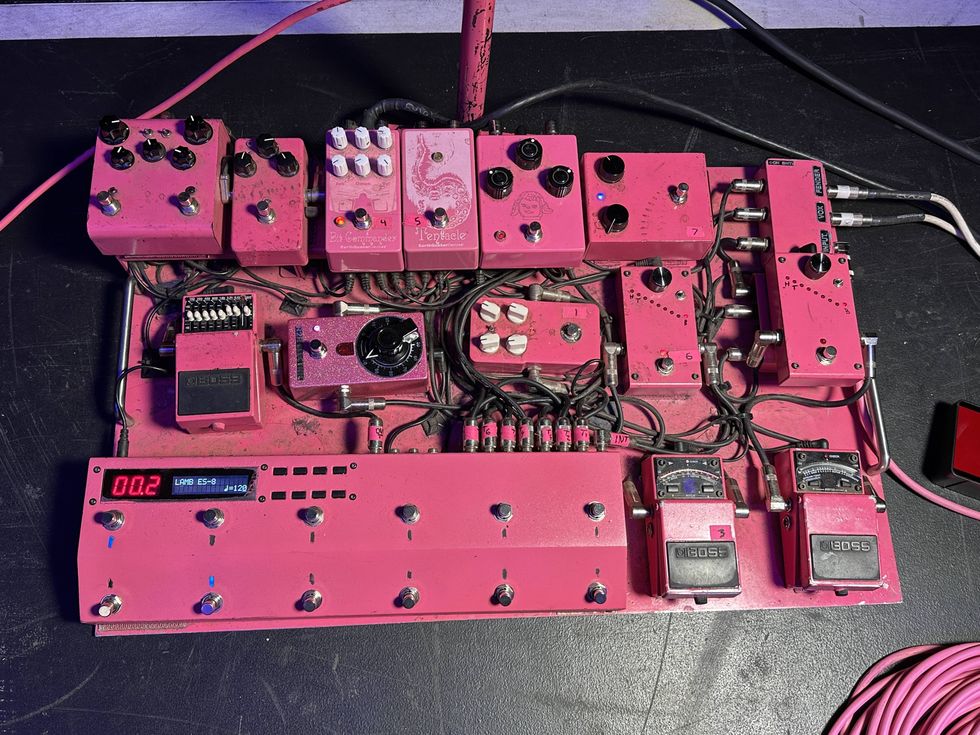
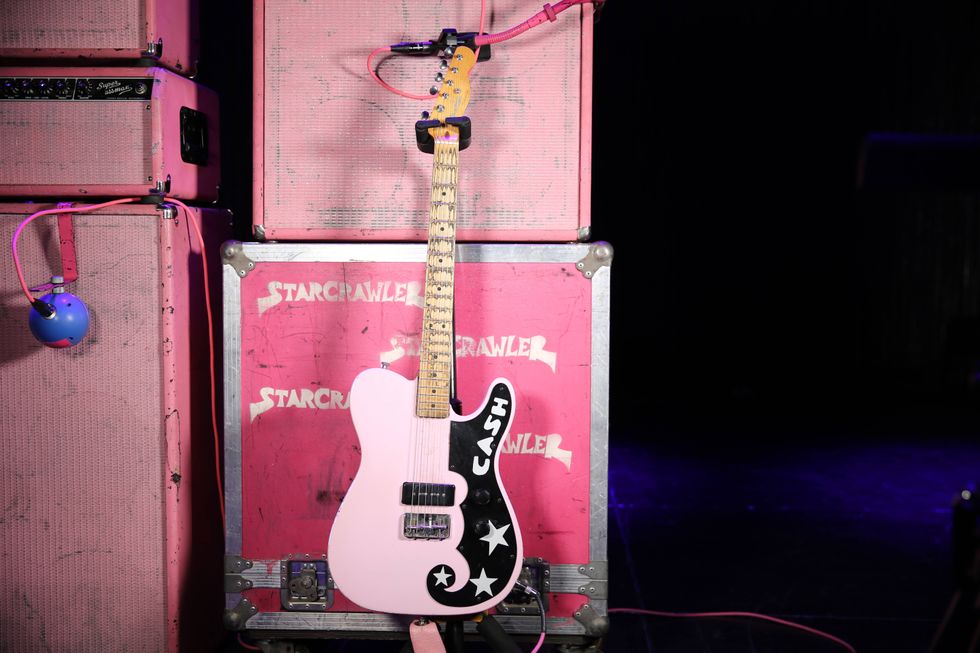
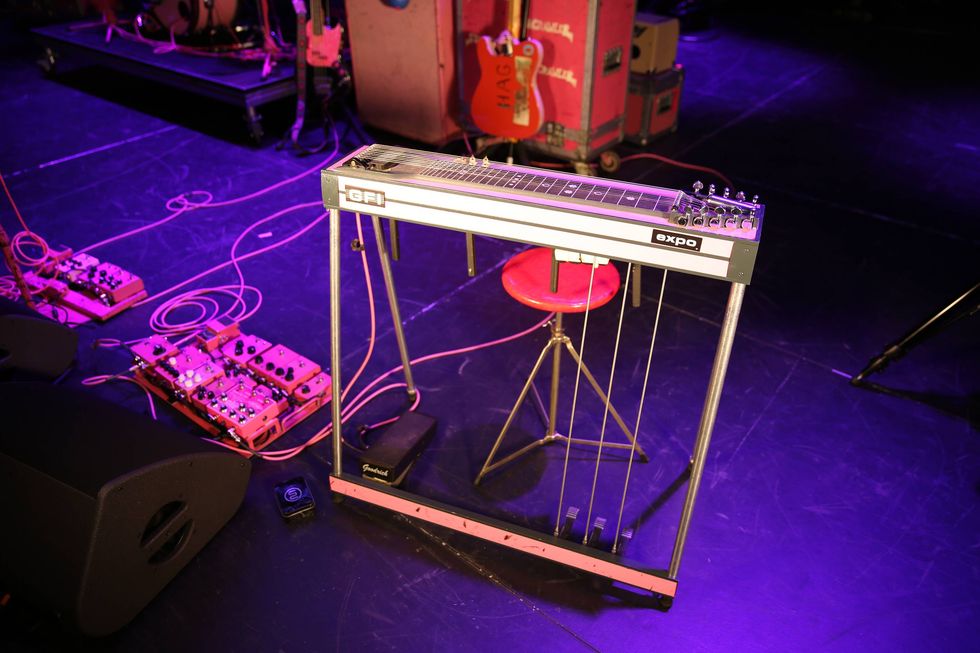
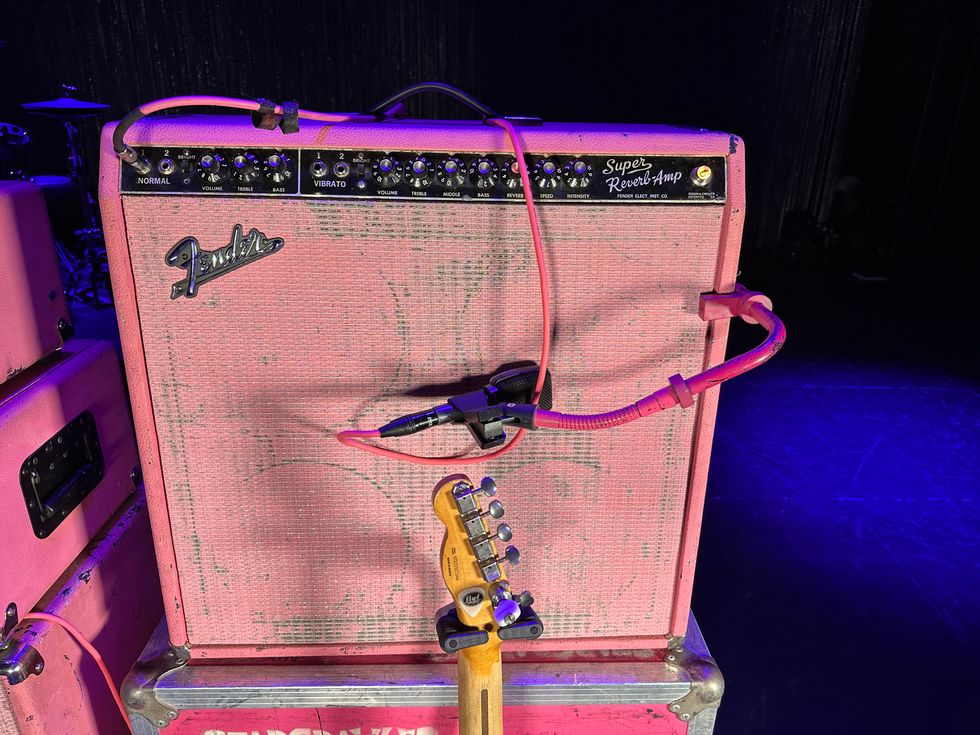
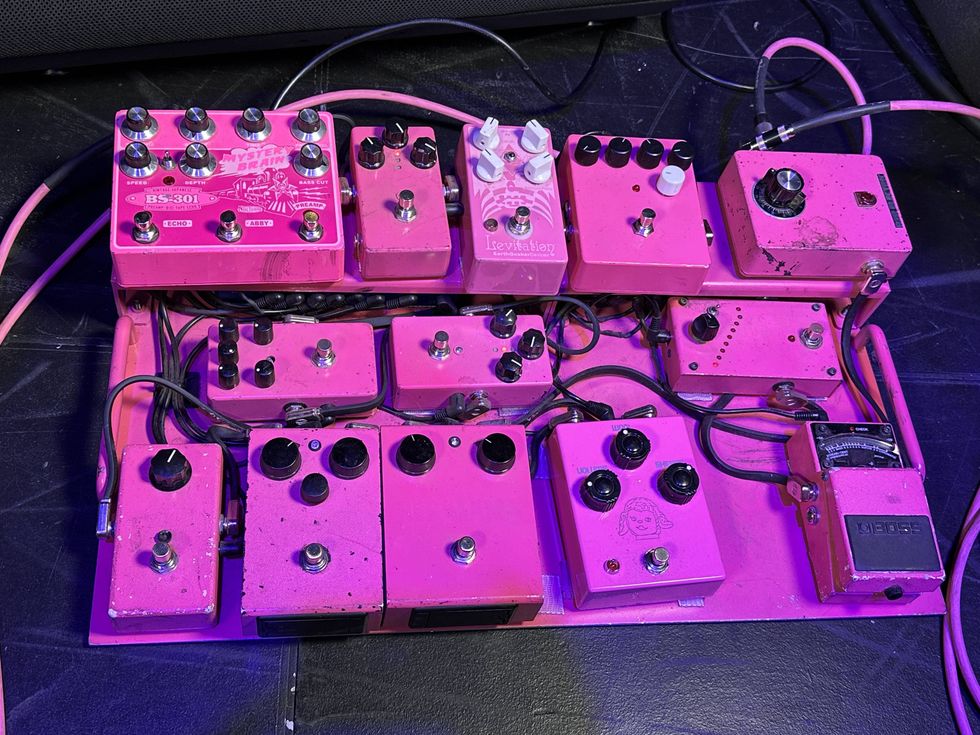

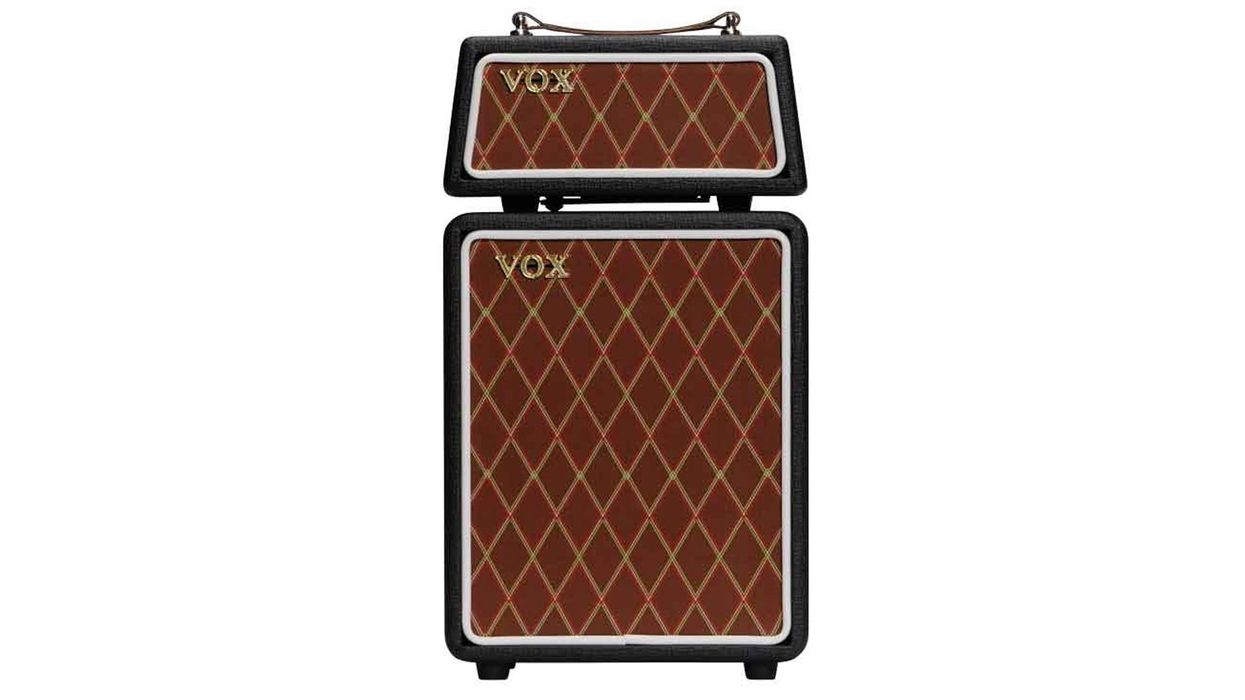
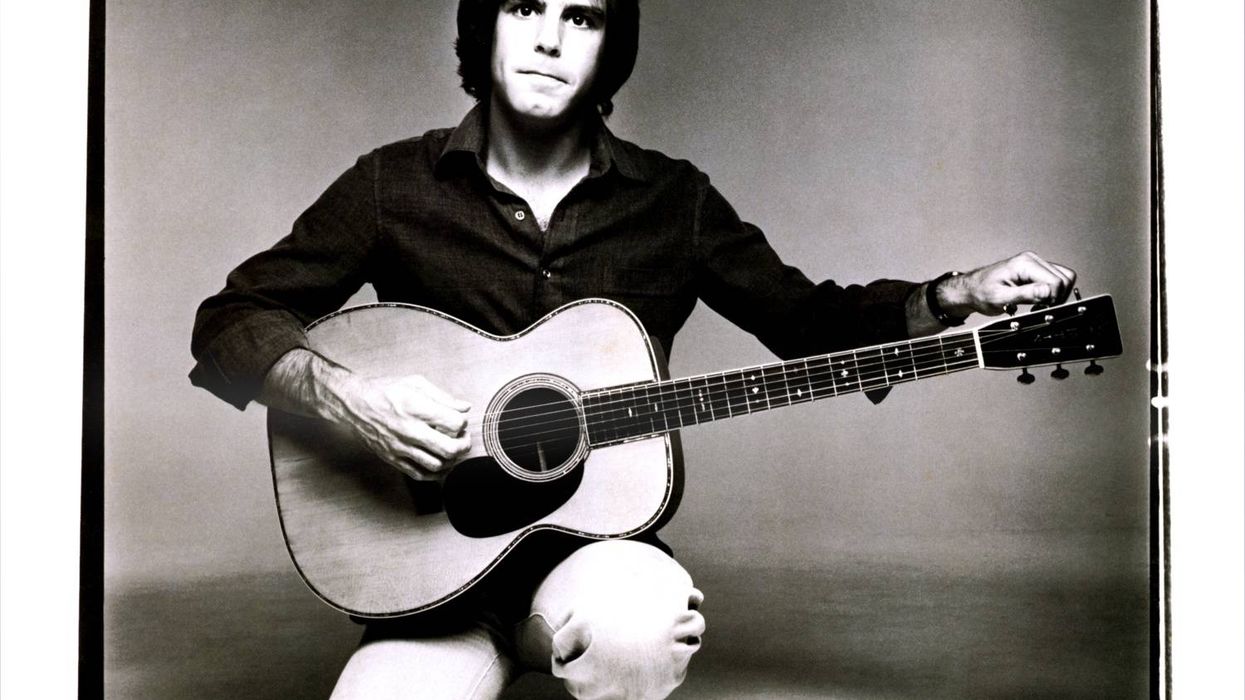
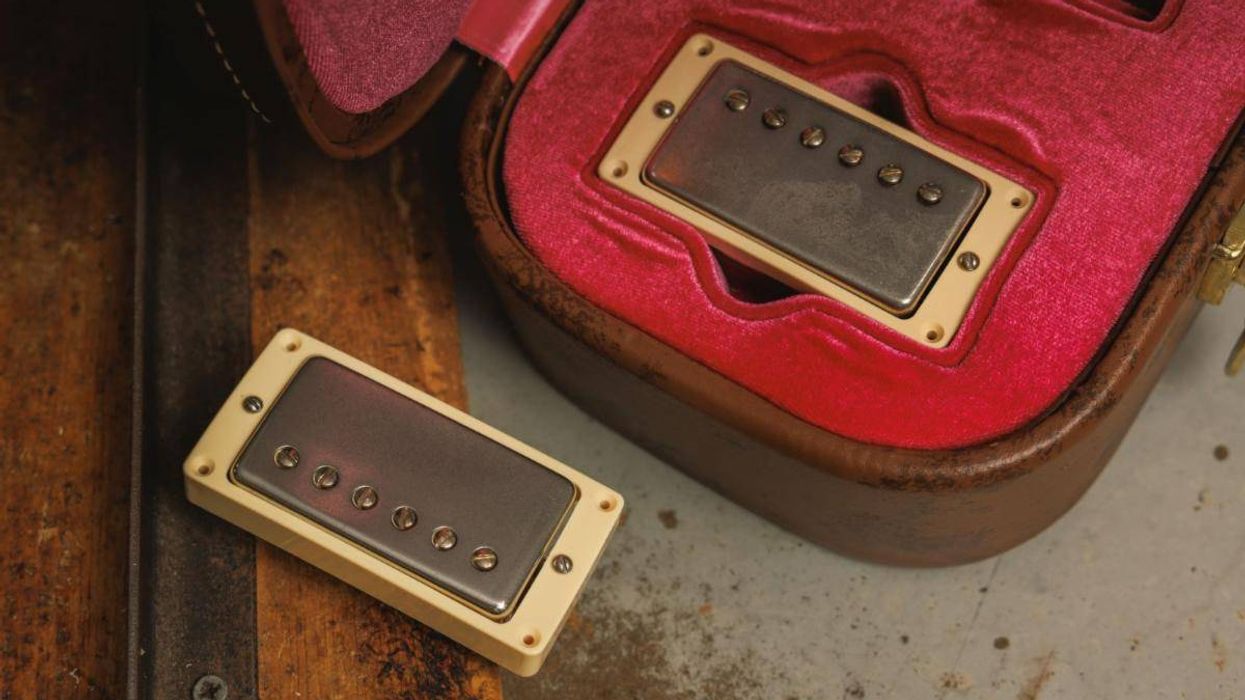
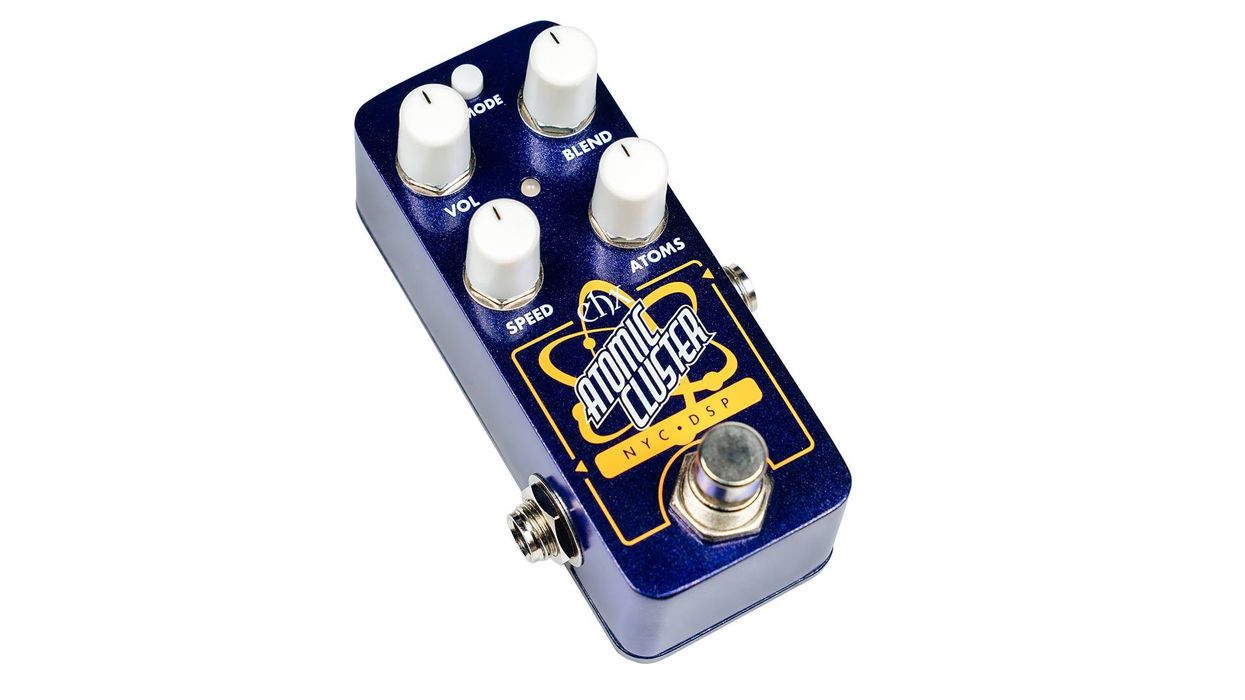
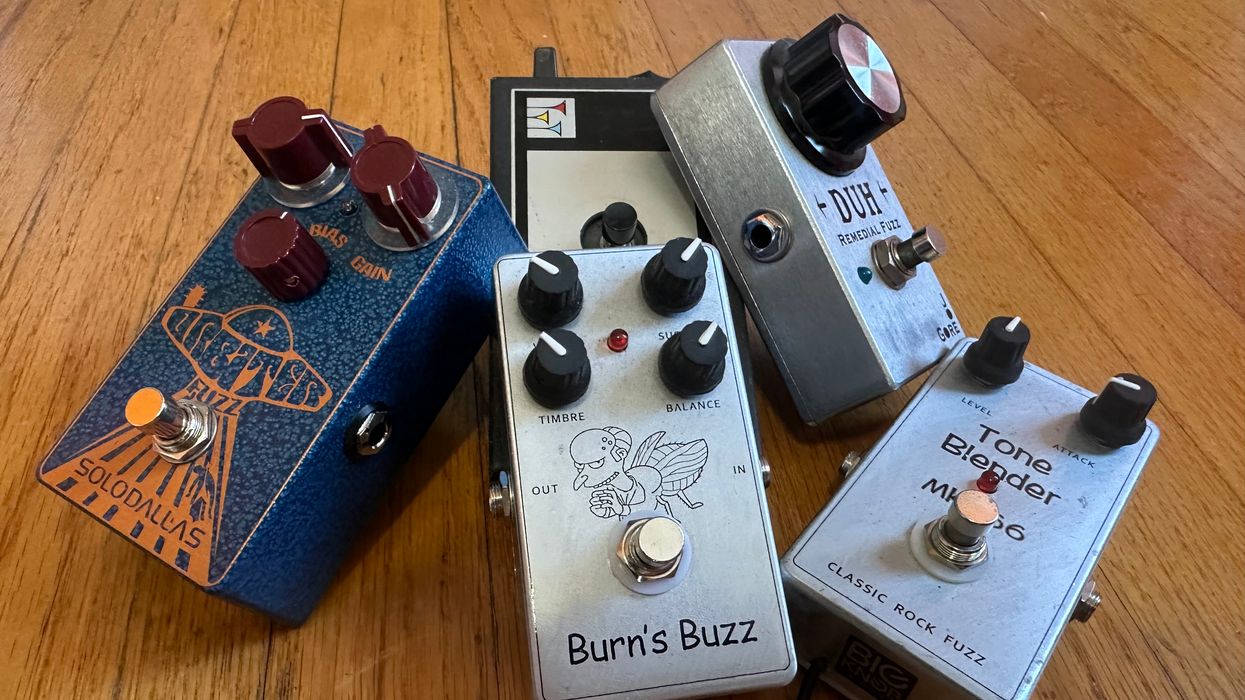
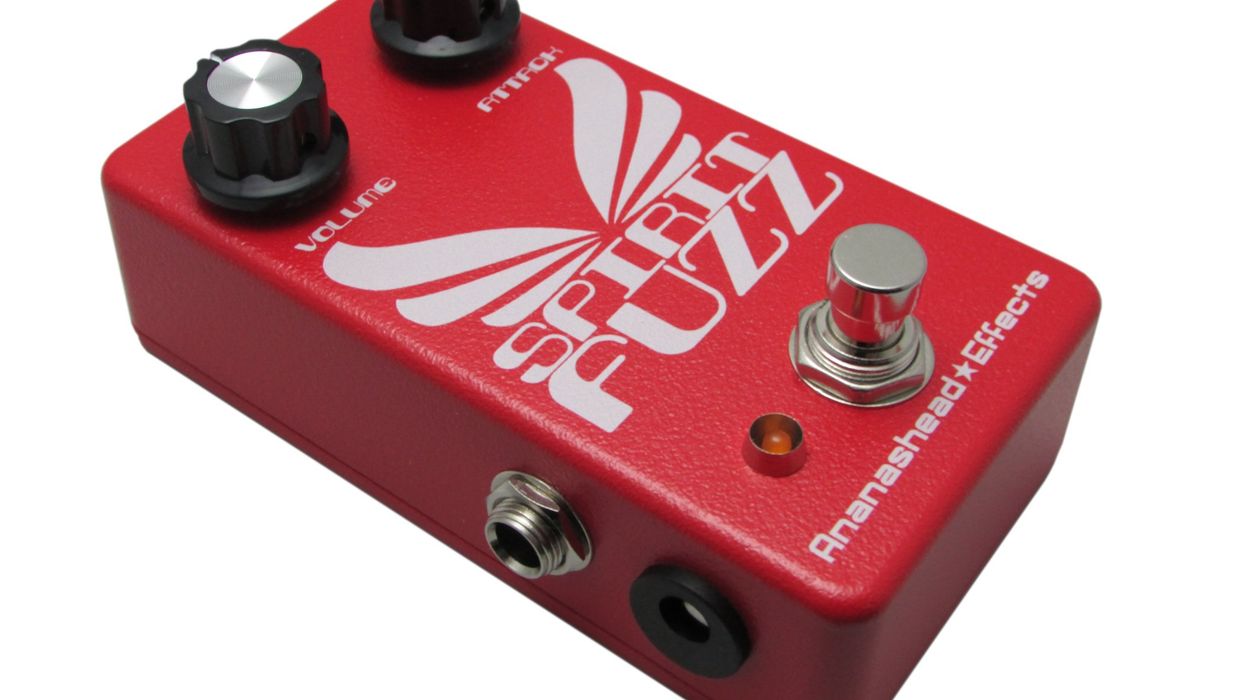
![Devon Eisenbarger [Katy Perry] Rig Rundown](https://www.premierguitar.com/media-library/youtube.jpg?id=61774583&width=1245&height=700&quality=70&coordinates=0%2C0%2C0%2C0)
